What are cruise ship overboard detection systems and why doesn't every ship have them?
- Cruise ship overboard systems aim to cut down on response time and notify the crew when someone goes overboard.
- Not all cruise ships have the systems yet, but some have installed them.
- Passengers rarely go overboard by accident, one industry expert said.
"Safety in Travel” is a six-part series focusing on the travel safety tools available in different industries, how they can affect the overall experience, and how travelers can make use of them. If you'd like to contribute to our future reporting and share your experience as a source, you can click here to fill out this quick form .
Sherry Boleen got up early to watch the sunrise with her family during a cruise to Mexico over Thanksgiving. But when she arrived at her siblings' cabin on Carnival Cruise Line's Carnival Valor ship around 6 a.m., her stepsister said their brother, James Michael Grimes, never came back to the room.
The family was sailing with roughly 20 relatives, so Boleen thought maybe he'd slept in one of their rooms. "He's notorious for just falling asleep anywhere, anytime," Boleen, who is 31 and lives at Fort Benning in Georgia, told USA TODAY. "And so I was like, 'Or he's just asleep on a lawn chair somewhere or whatever.' "
After looking for him around the ship to no avail, she said, she notified the cruise line, which began an hourslong search that ended with the U.S. Coast Guard rescuing 29-year-old Grimes from the water later that day around 8:30 p.m. after he had gone overboard.
James Michael Grimes spent approximately 20 hours stranded at sea.
Grimes, who was found about 20 miles south of Southwest Pass, Louisiana, told PEOPLE magazine in December that he remembered having some drinks and winning an air-guitar competition before waking up in the water. He did not respond to interview requests from USA TODAY.
While the incident ended with his safe return to shore, it raised questions about cruise ship overboard detection systems – a new technology that aims to cut down on response time and notify the crew as soon as someone goes overboard.
Carnival spokesperson Matt Lupoli told USA TODAY in an email that as soon as the line was notified, "Carnival Valor’s crew immediately searched the ship, retraced the ship's route, and coordinated with U.S. Coast Guard officials."
"During the search, another mariner spotted Mr. Grimes in the ocean and contacted the USCG, and the rescue was made," he said. "We remain greatly appreciative of all the efforts that brought Mr. Grimes to safety."
Too many cruising accidents?: Coast Guard opens investigation into Antarctica cruise casualties
Crystal Cruises will set sail again this summer: Line relaunching with new name, 'personalized service'

What are cruise ship overboard detection systems?
The Cruise Vessel Security and Safety Act of 2010 requires passenger vessels operating in the United States to "integrate technology that can be used for capturing images of passengers or detecting passengers who have fallen overboard, to the extent that such technology is available."
Cruise lines were given an option because when the law was passed, there were no available products that could reliably detect passengers going overboard, according to Brian Salerno, senior vice president of global maritime policy at Cruise Lines International Association, the industry's leading trade group.
"The problem was tuning the technology just right so that you wouldn't be getting false alarms every time a seagull flew by the ship," he said. "It's just human nature, if you have alarms going off constantly, they become less and less important."
In the years since, multiple companies have worked to develop more dependable technology, and CLIA and its member lines worked with the International Organization for Standardization to develop a standard for them.
The standard was finalized around the time the COVID-19 pandemic began, Salerno said, which delayed the process, but some ships have adopted the detection systems.
Boleen said security on board told her that while the Carnival Valor had camera footage from the bar where her brother was last seen, it did not have cameras everywhere because it was an older vessel.
Lupoli said cameras "may not have 100% visibility" in certain places on ships. "We do know that he left a bar on Deck 3, and we later found his clothes and wallet on Deck 6," he said.
In addition to security cameras, Lupoli said, all ships have "safety barriers that are regulated by U.S. Coast Guard standards and prevent a guest from falling off."
How do overboard detection systems work?
Technology company MARSS' MOBtronic system is among those that developed the system for cruises.
The product, which uses thermal cameras and micro radars to detect when someone has gone overboard and can alert crew members, along with other features, is installed on "quite a few" vessels, including one cruise line's entire fleet, according to CEO Johannes Pinl, though he could not name specific lines.
He said he expects the system to receive certification in accordance with the ISO (International Organization for Standardization) standard within the first half of 2023.
Salerno said that certification will give cruise lines greater confidence in spending money on overboard detection technology. For its part, MOBtronic starts at around $200,000, Pinl said. Typically, between four and 12 sensor stations are mounted on the ship's exterior, depending on its size and design.
"Overall, considering how much a cruise ship costs ... these investments are minor," he said.
How many cruise ships have overboard detection systems?
Salerno declined to name specific lines but said a number of ships have installed the detection technology. "I think we'll start seeing more and more of the detection equipment once the certification process is complete," he said.
He said he expects that at least one manufacturer will receive certification in accordance with the ISO standard this year.
- Carnival Cruise Line, Norwegian Cruise Line, Holland America Line and MSC Cruises did not answer USA TODAY's questions about whether or not they have the systems installed on their ships and referred inquiries to CLIA.
- Royal Caribbean International and Princess Cruises did not respond to USA TODAY's questions about whether or not they had installed the technology.
- A spokesperson for Disney Cruise Line confirmed the technology is available on its ships, but was unable to share more details.
How many people go overboard on cruise ships?
Between 2009 and 2019, there were 212 overboard incidents globally involving passengers and crew, according to statistics compiled for CLIA by consulting firm G.P. Wild (International) Limited. Only 48 people were rescued.
"I'll stress that people don't just fall over the side," said Salerno. "There are railings and they're pretty high. It's almost always the result of an intentional act."
The CVSSA requires passenger vessels to have rails that are "located not less than 42 inches above the cabin deck." Many cruise ships complied with that even before the law was enacted, according to Cmdr. Jason Kling, Detachment Chief at the U.S. Coast Guard's Cruise Ship National Center of Expertise, which conducts compliance inspections of cruise ships embarking passengers in U.S. ports or embarking U.S. passengers.
Why do people go overboard on cruises?
Alcohol can play a role in overboard incidents, said Michael Winkleman, a maritime attorney with Lipcon, Margulies & Winkleman, P.A., who has represented travelers in overboard cases. "Usually, it's just people not making smart decisions because they're dramatically overserved and they end up going over," he said.
He noted that cruise lines have procedures in place to prevent overserving passengers, but in instances when a passenger believes the cruise line contributed to their going overboard, Winkleman said, they could bring a lawsuit. Most suits of that kind are resolved with confidential settlements.
Cruise lines dropped COVID-19 rules: How did that affect cases? We got numbers from the CDC
Looking for cheap cruises?: Here's what to know know about finding deals
"My advice, which I think applies across the board with cruising, is don't leave your common sense at the port," he said.
Regardless of the cause, Salerno said overboard detection systems are aimed at improving the likelihood of a positive outcome. "The sooner the search can begin, obviously, the better the chance of recovery," he said.
In the search for Boleen's brother, she said she believes the crew could have benefitted from an overboard detection system. "I feel like it just would have saved so much time," she said.
Have you or someone you know had an emergency during a cruise sailing?
Delgado Trial Attorneys
HABLAMOS ESPAÑOL

The Miami Cruise Lawyers
(877) 372-0817.
24/7 Customer Support
[email protected]
Get In Touch With Us
Cruise Ship Overboard Detection Systems: How Do They Work and Which Cruise Ships Have Them?

By Delgado Trial Attorneys
Having a passenger fall overboard from a cruise ship is a traumatic occurrence, not only for the individual involved but also for passengers and crew members, as these types of incidents are often fatal. Some of the major cruise lines have installed what are known as overboard detection systems, technology that is meant to detect when someone has fallen overboard immediately. However, this technology is not required on all cruise vessels, which begs the question, “why?”
From January 2000 through May 2022, 278 people, including passengers and crew on major cruise line ships, went overboard. Some of the passengers who went overboard were rescued, but most died. If COVID had not shut down the cruise industry for much of 2020 and 2021, it’s likely the overboard stats would be higher.
The majority of cruise ships do not have specific man-overboard sensors, but they are becoming more common. 30 cruise ships owned by Carnival and Disney have been fitted with V-MOB sensors used to automatically alert the bridge of a man overboard incident.
The Cruise Vessel Security and Safety Act of 2010 requires that passenger vessels operating in the U.S. “integrate technology that can be used for capturing images of passengers or detecting passengers who have fallen overboard, to the extent that such technology is available.” At the time this law was passed, the technology was not available. Therefore, cruise lines were given an option when it came to compliance. That option is still the case today, which is why not all vessels have this technology onboard.
The possibility of false alarms was a major concern when it came to developing the technology. To avoid this possibility, technology companies worked hard to create dependable technology that would solely recognize falls overboard. As a result, multiple companies worked with the International Organization for Standardization to create a standard for them.
The standard was created and was finalized in 2019, shortly before the COVID-19 pandemic started in 2020. Unfortunately, like so many other things with COVID-19, the pandemic delayed the certification process. By that time, some ships had already adopted detection systems.
In addition to overboard detection technology, the CVSSA also requires all passenger vessels to have rails that are located not less than 42 inches above the cabin deck. However, most cruise vessels already complied with that requirement before the CVSSA was even enacted.
How Does Overboard Detection Technology Work?
One of the companies that developed overboard technology for cruise ships is MARSS. Their MOBtronic system is one of the overboard technology systems that is currently being certified. The system utilizes thermal cameras and micro-radars to detect when someone has fallen overboard. The system then alerts crew members that a person has gone overboard. MARSS’ MOBtronic system is expected to be certified in accordance with ISO standards within the first half of 2023. This certification will give cruise lines more confidence in the product, ensuring that their passengers and crew members are kept safe.
The technology does come with a price tag and a hefty one at that. MOBtronic starts at approximately $200,000. Normally anywhere between four and 12 sensor stations will be mounted on the vessel’s exterior. The larger the vessel, the more stations will be needed on the exterior of the ship. However, considering how much the average cruise ship costs, the money needed for this investment is relatively small and definitely worth it considering the lives that could be saved.
Which Cruise Ships Have Overboard Detection Systems? Many of the major cruise lines have some type of overboard detection technology on their vessels or at least on their newer vessels. The number of vessels that have this technology will only increase as manufacturers of this technology are certified with ISO standards. At least one manufacturer is expected to be certified this year.
A recent article in USA Today on this technology highlighted which companies had this technology and which did not. Most did not respond to the requests by USA TODAY except for Disney Cruise Line who confirmed that they do have the technology on their vessels.
How Common Are Falls Overboard?
Falls overboard are not a common occurrence. In fact, the chances of falling off a cruise ship are quite slim. Usually, the only way to fall overboard is if a passenger purposefully climbs up and over the safety barriers or is purposefully pushed over the safety barrier. Overboard falls often happen from some type of intentional act or reckless behavior. Falls are not something that inadvertently or accidentally happens.
According to a 2020 report from CLIA Global, in 2019, 25 people went overboard from cruise ships. These figures include both passengers and crew members. This number is in comparison to over 13.7 million passengers who went on cruises in the U.S. in 2019.
Between 2009 and 2019, a total of 212 overboard incidents were reported globally, according to CLIA. Of these 212, only 48 people were rescued. This comes out to 28 percent overboard accidents resulting in a rescue or around four to five successful rescues a year.
Why Do Falls Overboard Happen?
Alcohol consumption plays a significant role in why falls overboard occur. While someone is on a cruise vacation, it can be easy to let alcohol consumption get out of hand, and with more alcohol comes fewer inhibitions. Usually, these incidents happen when people are not making smart decisions. Cruise lines have procedures in place to keep passengers from being overserved, but this does not mean that it does not happen. Cruise lines have these procedures not only to save lives but also to limit liability in the event someone does fall overboard after consuming too much alcohol and their family files a lawsuit against the cruise line. Normally these types of lawsuits are resolved confidentially out of court. Other times, a fall occurs because a person willingly jumps overboard in an attempt to take his or her life. In other disturbing cases, another individual may push a person. Video footage of this incident is imperative to catch the criminal and hold him or her responsible for his or her actions. Overboard detection technology could prove crucial in any of these circumstances.
Do Falls Overboard Always Result in Fatalities?
When the news reports on a fall overboard, you usually hear that the passenger died as a result. Falls overboard do not always result in the death of the person who fell. Survival in a fall overboard can depend on a number of factors, including whether the person who fell was hit or injured by impact with the water or another part of the ship and how quickly the individual is rescued by cruise crew members. The deck from which the person fell can also play a large factor in whether he or she survives. Falling from a higher deck will result in a stronger impact on the water. In fact, many times, the person who fell overboard is already deceased by the time he or she reaches the water, especially if the person hits another object on the way down.
The waters are sea are nothing like the waters just off a beach. This is why wind and weather can also play a major role in whether someone survives a fall overboard. If the seas are rough, even the best swimmer can struggle to stay afloat. Rough waters can also make it very difficult for crew members to locate the fallen person. Additionally, many falls overboard occur during night hours after someone has had a large amount of alcohol to eat. It can be extremely dark in open waters at night, which can make it next to impossible for crew members to locate someone who fell off the boat.
How fast the ship is traveling can also play a part in whether a person survives a fall overboard. If the ship is moving, the speed the vessel is traveling, and the current caused by the vessel can mean that a person can be swept away quickly after falling. If someone falls while the ship is traveling and is not immediately noticed by the crew or captain, making it nearly impossible to locate him or her.
Another factor that can affect survival is the temperature of the water. Since the open water at sea is so deep, it does not warm to the temperature we are used to off the shores of a beach, which means the water can be very cold and can cause shock to the human body. Hypothermia can set in very quickly when water is less than 70 degrees Fahrenheit, given the person who fell overboard has very little time to survive while rescue efforts are ongoing. Obviously, the location of where the vessel is can play a major part in the temperature of the water. If your vessel is sailing in the warm Caribbean Sea, your chances of survival are much higher than if your cruise is in chilly Alaskan waters.
While it is rare for a passenger who has fallen overboard to survive, it has happened. Over Thanksgiving 2022, a man fell overboard from a Carnival Cruise vessel and spent nearly 20 hours treading water in the ocean off the Gulf of Mexico before being rescued. He was lucky as rescues like his are extremely rare.
These overboard detection systems are meant to shorten the time it takes to locate a person who has fallen overboard. If the individual is still alive once he or she hits the water, time is of the essence to locate him or her. Even mere minutes can be all it takes to save a person’s life. By being able to pinpoint where the individual fell and at what time through this technology, the crew members can hopefully quickly locate the fallen person. Without this technology, it turns more into a guessing game of determining where the person fell. This will almost certainly result in a fatality.
The Miami-based cruise ship accident and maritime injury law firm of Delgado Trial Attorneys possess a skill set that few other maritime attorneys can claim. Raul’s extensive experience representing the cruise lines and developing their defense strategies years before they started representing the passengers and crew members that suffered injuries because of the cruise lines’ negligence. Combined with Raul Delgado, Sr.’s 45 years of personal injury experience fighting on behalf of injured accident victims, Delgado Trial Attorneys offers a combination of experience in all types of cruise ship personal injuries unlike any of their competitors. Our experience allows us to effectively strategize and advocate for every client we represent. We have handled all types of cruise ship passenger accidents over the years with a focus on slip, trip and falls, medical malpractice, FlowRider accidents, sexual assaults, Death on the High Seas, and more. Contact our law firm today for a free case evaluation. Virtual sign-ups available. Visit https://cruiselawyermiami.com/ to learn more.
Man overboard: Cruise ship overboards and how they happen – The Points Guy
Cruise ship overboard detection systems: What are they? (usatoday.com)
How Do You Fall Off a Cruise Ship? Experts, Data Say It’s Not Easy. (insider.com)
What Happens When Someone Falls Off a Cruise Ship | Condé Nast Traveler (cntraveler.com)

SEEING BEYOND THE OBVIOUS
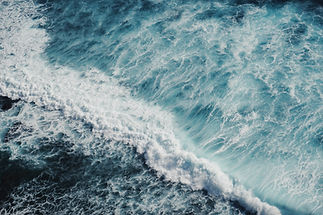
Man Overboard and Bridge-Jumping Detection
Man Overboard events continue to be a common occurrence in the cruise industry and other related markets. The problem is compounded by the fact that when these events occur the timely availability of important data is missing. Accurate confirmation of the event including time of occurrence, location on the ship and location in the sea is critical, but often unavailable for hours following an occurrence, if at all. Fortunately, proactive detection systems such as the Man Overboard Detection System from PureTech Systems, can accurately detect man overboard events and provide immediate, actionable data to response personnel.
Key Features:
Automatic Detection of Man Overboard Events,
Patented Video-Based Solution,
Detection Rates Above Industry Benchmarks Over Wide Variations in Sea State and Weather Conditions,
Very Low False Alarm Rate,
Instant Video Validation of Event for Immediate Action,
Reporting of Event Latitude and Longitude (i.e. Location in the Sea),
Fall Origin Guidance (i.e. Location on the Ship),
Alarm and Video Retention and Review,
Situational Presentation of Incident Data to Decision Makers,
In Service Installation, and
Drone Integration Capability – Automatic Search and Rescue Dispatch with Live Video
Almost as important as detection accuracy, false alarms from weather conditions and cruise operations can minimize the effectiveness of detection systems. The Man Overboard Detection System has undergone real-world testing on board superliner-class cruise ships using industry-developed guidelines along established cold water and warm water cruise routes. The system is affordable and testing demonstrated positive results including minimal false alarms, and very high detection rates.
Proudly partnered with

Suitable for:
- Container Ships
- Bulk Carriers
- Tanker Ships
- Cruise Ships
- Naval Ships
- Offshore Rigs
- Special Purpose Vessels
Pure Tech Products

6 cruise passengers have gone overboard in 3 months. Here's why most ships still don't use detection tech for rescues.
- An average of 19 people go overboard on cruise ships every year, industry data has found.
- Since 2010, cruise ships have been required to install technology to help prevent overboard deaths.
- But the US Coast Guard isn't enforcing the requirements or inspecting ships for the technology.

Ronnie Peale Jr. , a 35-year-old from a small town in Virginia's Shenandoah Valley, took his first cruise in May 2023 to celebrate his partner's birthday.
On the fifth day of the cruise, Peale went missing.
"By one o'clock I had that gut-wrenching feeling in my stomach," his mother, Linda Peale, told Insider. "He always called me twice a day to check on his dogs."
" He didn't call."
Security footage reviewed by Carnival showed Peale "leaned over the railing of his stateroom balcony and dropped into the water at approximately 4:10 a.m.," a spokesperson for the cruise line said.
At 6:36 p.m. — more than 12 hours after Peale fell overboard — Carnival contacted the Coast Guard, according to the agency. For 60 hours, Coast Guard responders searched 5,171 square miles , an area slightly larger than the state of Connecticut, but did not find his body.
Peale is presumed dead, according to a letter sent to his mother by the Coast Guard, a copy of which was viewed by Insider.
While man-overboard incidents are rare, they are a leading cause of death for passengers on cruise ships, according to research conducted by Travis Heggie, a professor at Bowling Green State University who specializes in health and safety risks in the tourism industry.
On average, 19 people go overboard on cruise ships every year — of those, about four people are successfully rescued, a 2020 study commissioned by the industry trade group Cruise Lines International Association found.
Less than two months after Peale fell overboard, 30-year-old Jaylen Hill also went overboard a Carnival cruise ship. Hill was last seen at 8 a.m. on Sunday, July 23. The cruise line alerted the Coast Guard at 6:30 p.m. that night, Eric Rodriguez, a petty officer third class, told Insider at the time.
In total, at least five passengers have gone overboard cruise ships this summer, including Hill. The incidents occurred on the cruise ships Carnival Elation , Spectrum of the Seas , Emerald Princess , Mariner of the Seas , and Wonder of the Seas . Only one of the passengers was successfully rescued .
Locating a missing person among the sprawling labyrinth of bars, restaurants, entertainment venues, pools, and staterooms that make up these floating cities can be frustrating and time-consuming, especially considering the complications of texting and calling at sea.
Even if someone survives the steep fall and avoids the ship's massive propeller or swirling wake, hypothermia can set in within minutes. Unmonitored security footage and inconsistent safety protocols make the chances of survival even more slim.
Experts say the large gaps of time between a person going overboard and the initiation of rescue missions are one of the main reasons why man overboard incidents are so deadly. The longer someone is alone in the open ocean, the lower the chance of recovery, Ross Klein, a cruise industry researcher who has served as an expert witness before Congress, told The Washington Post earlier this year.
"Overboard situations are obviously upsetting events for many — and although they are rare, with the likelihood of an incident at less than 0.000001% — we take our responsibility to provide a safe environment for guests and crew very seriously," a spokesperson for Carnival Corporation said, adding that "it is virtually impossible to fall off a cruise ship without a purposeful action to climb up and over safety rails," which must be at least 42 inches high.
Legislation without regulation
To help prevent overboard fatalities, Congress in 2010 required cruise ships to integrate technology "that can be used for capturing images of passengers or detecting passengers who have fallen overboard, to the extent that such technology is available," as part of the Cruise Vessel Security and Safety Act, or CVSSA.
The Coast Guard interprets the statute to mean cruise ships have the option to choose between image-capture systems — like CCTV security cameras — or detection systems, which use technology like thermal cameras and radar to alert crew of someone falling overboard in real time, a spokesperson for the agency told Insider. This gives cruise companies the flexibility to decide which type of technology they use.
But the law's vague language opens it up to a second interpretation, which some experts say was the original intent of Congress: that cruise ships are allowed to use image capture technology like CCTV cameras to fulfill the CVSSA until reliable man overboard detection technology becomes available.
But the Coast Guard, the agency tasked with ensuring cruise ships comply with the law, does not enforce either requirement because the rulemaking process it first began eight years ago is not yet finished, a Coast Guard spokesperson told Insider. That means for the 10-plus years the CVSSA has been law, the Coast Guard hasn't inspected cruise ships for any MOB technology , cameras or otherwise, the spokesperson confirmed.
Nor does the agency regulate or set standards for the technology cruise ships should use to detect passengers who have fallen overboard, the spokesperson said. However, the Coast Guard does examine cruise ships to ensure they "have adequate procedures in place to recover a man overboard in a satisfactory manner," they added.
"I think many of us don't realize that about any law," Jamie Barnett, the president of the International Cruise Victims Association, told Insider. "It doesn't just get passed and then happen — it takes oversight. It takes people paying attention to make sure that it happens."
Most cruise ships rely on security cameras to spot people who've gone overboard
All Cruise Line International Association members comply with the requirements in the CVSSA, with most ships opting for technology that is capable of capturing images of people falling overboard, a CLIA spokesperson told Insider.
But victims' advocates say security cameras on their own aren't an effective way to prevent man-overboard fatalities because they are not constantly monitored. And since cameras don't always capture every area of the ship, sometimes there's no footage at all.
After 29-year-old James Michael Grimes went overboard a Carnival cruise ship in November 2022, his stepsister was informed by a security officer that they had footage of Grimes leaving the bar, but not of him going overboard, she told USA Today . A Carnival spokesperson told the outlet at the time that cameras "may not have 100% visibility" on some areas of its ships.
When a Royal Caribbean crew member went overboard the Vision of the Seas in 2017, a Bahamian marine safety investigation determined a "clear view of crewmember jumping overboard was not detected as the area was not covered by CCTV (blind area)."
In a statement shared with Insider, CLIA emphasized that safety and security are a top priority for the industry.
Related stories
"All cruise lines use a variety of measures to maintain a safe environment on board cruise ships, including physical barriers around the periphery of external decks and balconies, video surveillance systems in public areas, and trained crew members who can respond quickly to an unsafe situation or emergency," the spokesperson said.
Automatic detection systems are still being tested to meet international standards
The cruise industry, which says it's been testing man-overboard, or MOB, detection systems since as early as 2006, says that technology that senses someone going overboard and alerts crew members in real time is not yet reliable in marine environments nor widely commercially available.
In 2017, the Coast Guard said three providers had demonstrated "initial feasibility," but it recommended waiting to pass further regulations until an international standard was developed so as to not "add burden to industry and business processes."
Since then, the International Standardization Organization has developed technical requirements for systems to detect a person who has gone overboard from a ship. The standards, created with input from the Coast Guard and cruise industry, were published in 2020 , but a Coast Guard spokesperson said it's not aware of any products that currently meet them.
Marss, a global-technology company, said it has created a product, called MOBtronic, that is on track to meet international standards by the beginning of 2024. The system completed 120 tests with a 100% success rate, the company said, and would cost about $500,000 per ship to install.
Mike Collier, a program lead for MOBtronic, said the technology is already installed on one major cruise line's entire fleet, though he declined to specify which.
CLIA said once certified detection systems are available, it may take several years to see a significant uptake in the new technology due to limited shipyard and product availability.
A spokesperson for Carnival Corporation said that "despite the claims by manufacturers and their salespeople, these systems are still unreliable, as was the case when our company piloted some of the proposed technologies." MOB-detection technology does not prevent someone from climbing over the safety rails or jumping off, Carnival added.
After eight years of regulatory limbo, C ongress wants answers from the Coast Guard
After eight years of regulatory limbo, lawmakers want to know when the Coast Guard will enforce the man overboard technology requirements of the CVSSA and if it will require detection systems on every ship.
In May, four members of Congress, including Sen. Richard Blumenthal of Connecticut, sent a letter to the Coast Guard requesting information about the current use of man-overboard technology on cruise ships.
In response , the Coast Guard said it began the rulemaking process that would allow the agency to enforce the requirements back in 2015, but the rule was never finalized because of public comments that "questioned whether man-overboard detection technology was sufficiently reliable or available."
Collier, who was Carnival Corporation's man-overboard-detection expert prior to his role at MOBtronic, said the lack of concrete regulation from the Coast Guard is the reason cruise lines haven't fully committed to installing the technology.
"While there remains no clarity from the regulators, cruise lines will revert to making investment decisions based primarily on revenue generation," he said.
A Coast Guard spokesperson said there are no regulations preventing cruise lines from installing MOB detection systems on their vessels.
The Coast Guard is scheduled to introduce a revised version of the 2015 proposed rule in June 2024, which would clarify definitions, update existing regulations, and create performance standards for implementing the CVSSA.
"The Coast Guard is considering the best approach to address this issue as quickly as practicable," a spokesperson said.
Meanwhile, Blumenthal has introduced new legislation that he said would ease some of the original act's opacity by requiring cruise ships to install technology that can both capture images of and detect a passenger going overboard, a change CLIA said would be "pre-mature."
"Congress intended the Coast Guard to have — and use — the power to safeguard passengers more effectively by requiring technology that detects people going overboard in real time," he said in a statement shared with Insider. "Legislation would make this authority absolutely clear — and make Coast Guard regulations immune from any future attempts to weaken them."
Loved ones navigate the murky waters of a death at sea
Jennilyn Blosser, Peale's partner, said the most frustrating part about the process was how long it took for Carnival to locate the video footage and confirm that Peale had fallen overboard.
Blosser said her family told customer service around 2 p.m. on Monday, May 29, that they were unable to locate Peale. The employee then checked the group's bar tab and said Peale had recently ordered a drink on deck 10, she said, which led the family to believe he was still on the ship. Blosser said she later found out her cousin ordered the drink, not Peale.
Around 5 p.m., Blosser said she reported Peale missing to customer service a second time after he didn't show up to dinner. Carnival then conducted an onboard search and announced his name over the ship's loudspeaker, she said. The cruise line contacted the Coast Guard at 6:36 p.m.
"I just don't know why it took so long for them to be able to figure it out," she told Insider.
A Carnival spokesperson said the company's internal investigation "gives a different set of facts and sequence of events," but declined to give details citing "respect for his family."
Finding answers didn't get any easier after the Coast Guard suspended its search for Peale, his mother said, adding that the cruise line agreed to show her and her husband the ship's security footage of their son after she hired a lawyer.
When she emailed the Coast Guard questions about the details of the incident, such as what time Carnival viewed the security footage and the condition of the water when Peale fell, a Coast Guard attorney said the only way he could share the requested information was if she submitted a Freedom of Information Act request, according to emails viewed by Insider.
Filing a claim against a cruise line is one of the only ways for family members to obtain information about overboard incidents, Barnett of the ICVA said, adding that some lawyers won't take cases involving cruise ship fatalities because the complexities of maritime law make successful outcomes so rare.
For example, if a cruise passenger dies beyond three nautical miles of US, legal action and compensation is limited by the Death on the High Seas Act, or DOHSA, a federal law enacted in 1920 that allows only financially dependent relatives of the deceased to file a wrongful-death claim for monetary losses. DOHSA does not allow survivors to recover damages for pain and suffering or mental anguish, unlike other wrongful-death cases.
As for the Coast Guard's search-and-rescue missions for cruise passengers who go overboard, American taxpayers are the ones footing the bill , not cruise lines.
"There's no financial consequence when someone goes overboard to the cruise line," Jim Walker, a maritime lawyer who specializes in the cruise industry, told Insider. "So there's not really an incentive that forces them to install the system."
Watch: The rise and fall of the cruise industry
- Main content
Quick Links
- ⟶ Home
- ⟶ Contact
- ⟶ FORCE PROTECTION
- ⟶ CRITICAL INFRASTRUCTURE
- ⟶ BORDER SURVEILLANCE
- ⟶ CRUISE
- ⟶ SUPERYACHT
- ⟶ NiDAR Command
- ⟶ NiDAR 4D
- ⟶ NiDAR CUAS
- ⟶ NiDAR X-COMPACT
- ⟶ NiDAR X
- ⟶ NiDAR X-JOC
- ⟶ NiDAR X-SCOUT
- ⟶ NiDAR X-TERRA
- ⟶ RADiRguard
- ⟶ MOBtronic
- ⟶ CLiMBERguard
- ⟶ INTERCEPTOR-MR
- ⟶ INTERCEPTOR-SR
- ⟶ T&C's
- ⟶ WHO WE ARE
- ⟶ OUR LEADERSHIP
- ⟶ NEWS
- ⟶ CAREERS
- ⟶ LIFE ON MARSS
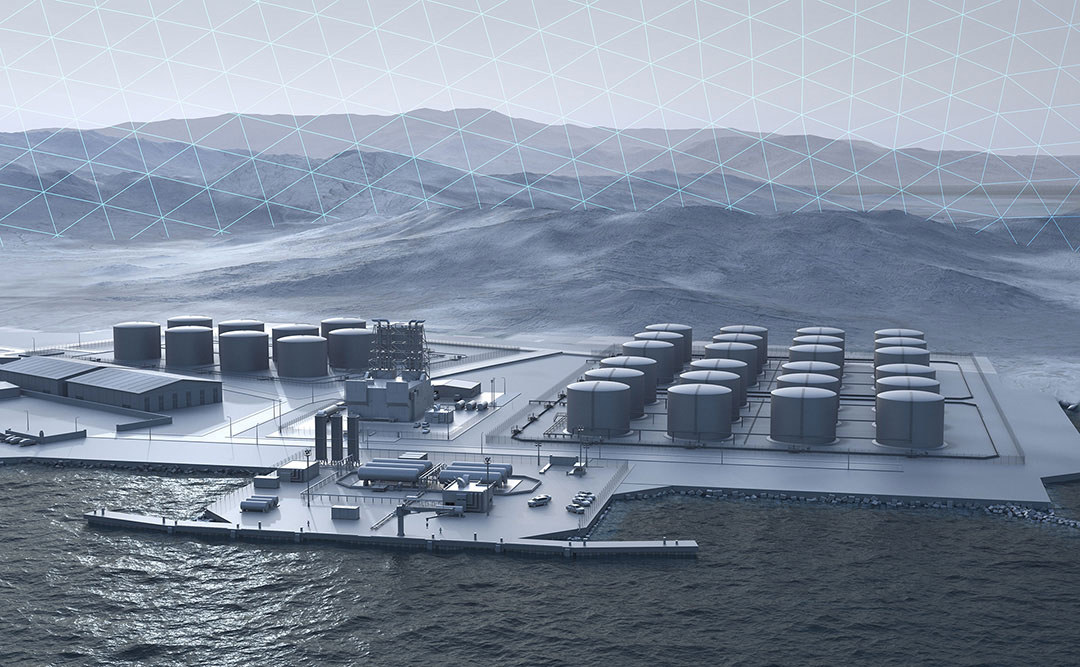
CRITICAL INFRASTRUCTURE
Helping manage risk in public and private sectors for the protection of cities and critical infrastructure
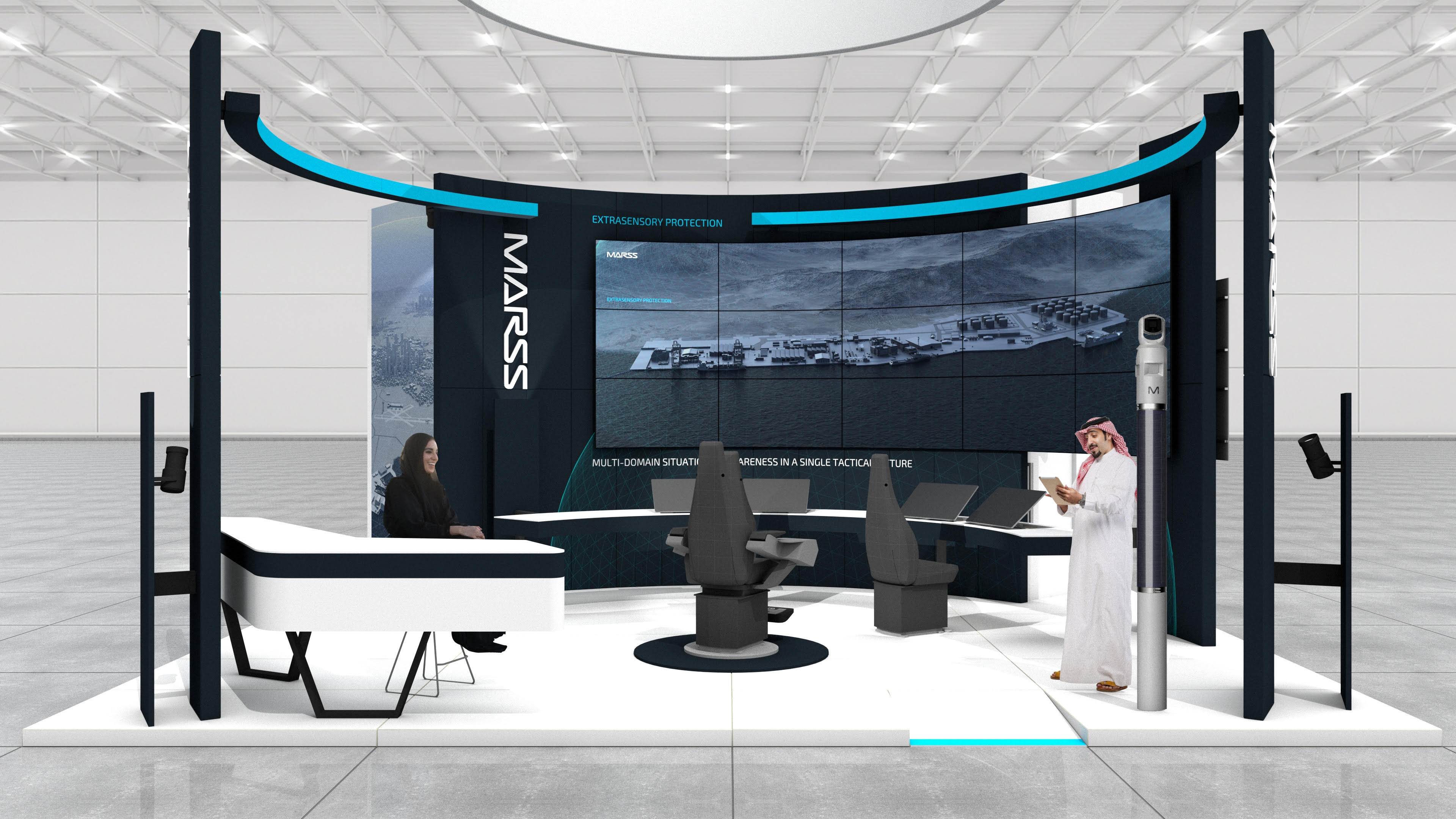
MARSS to showcase interactive NiDAR CUAS C2 at the World Defense Show
MARSS is pleased to announce their attendance at the World Defense Show (WDS) in Riyadh on the 6-9th of March. MARSS will be showcasing a variety of capabilities including NiDAR CUAS in a C2 and expeditionary C2 set up, RADiRGUARD, and a new product launch, aimed at the CUAS market.
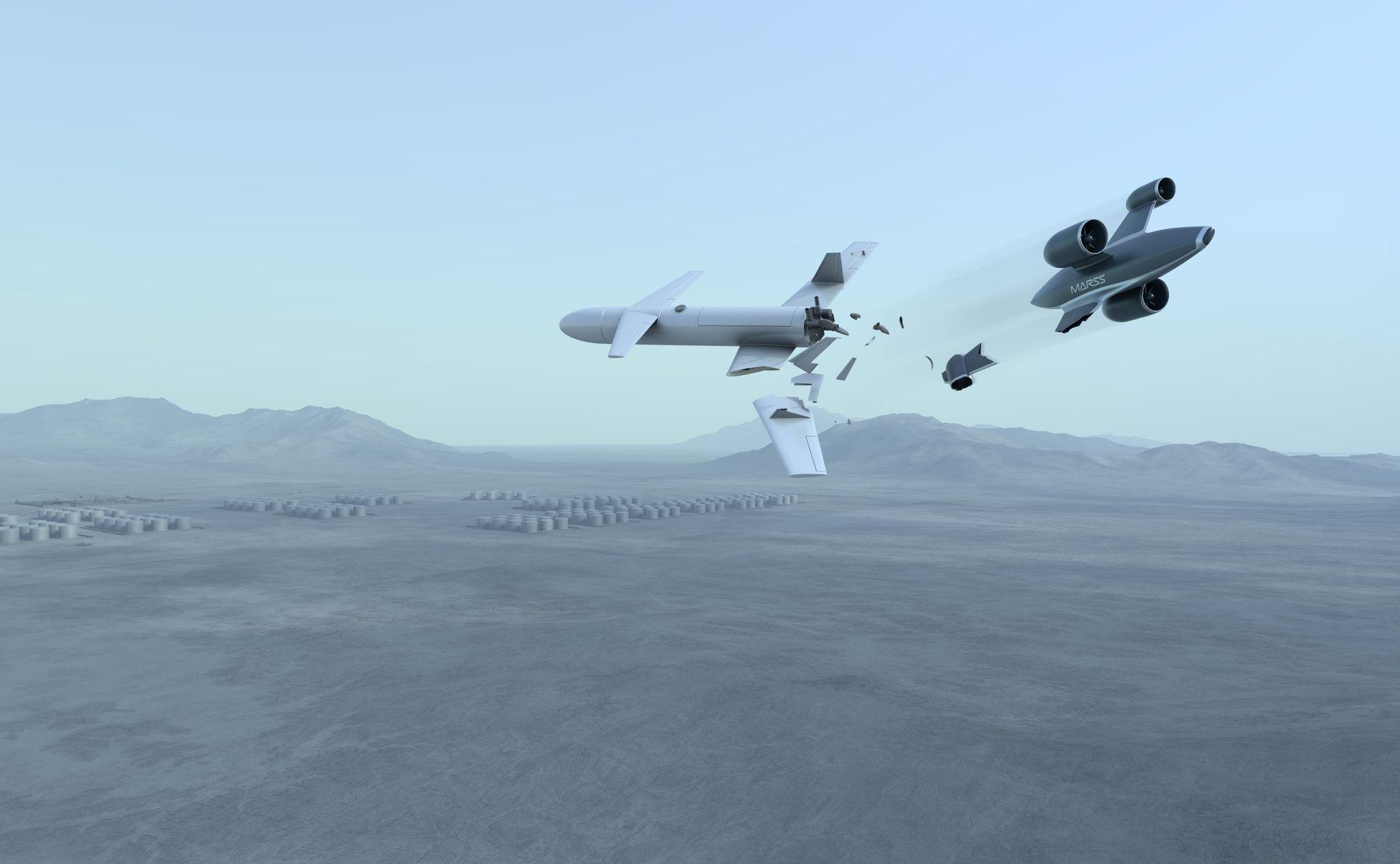
MARSS launches game-changer for the C-UAS market
Live from the inaugural World Defense Show in the Kingdom of Saudi Arabia today, defence & security technology specialist MARSS, launched its latest, never seen before, UAS countermeasure.
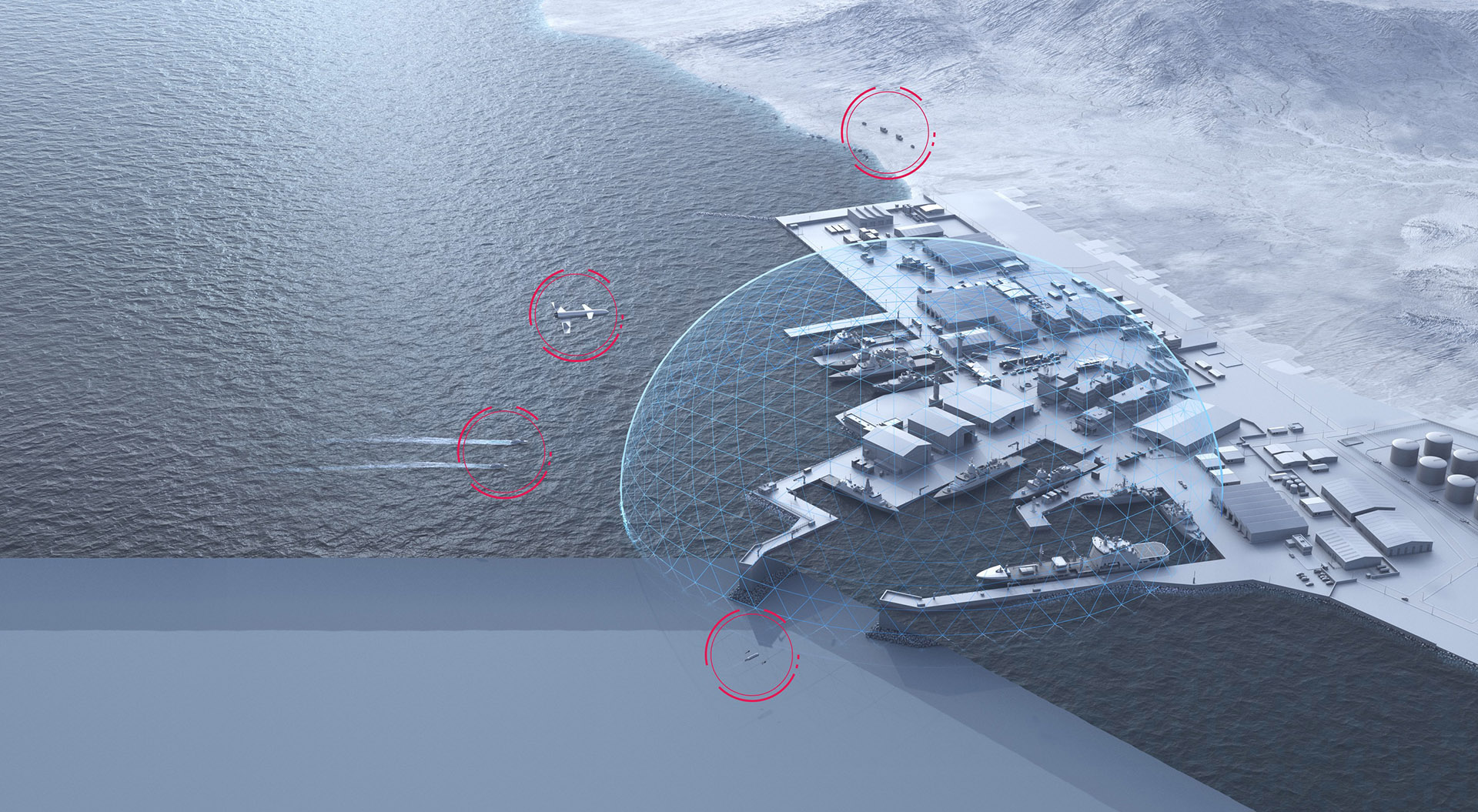
Gold Sponsor MARSS to present NiDAR capability at Maritime Reconnaissance and Surveillance Technology Conference
MARSS is pleased to announce they will be attending and sponsoring the Maritime Reconnaissance and Surveillance Technology Conference in Arlington, VA on May 5-6th. As the Gold Sponsor for the event, MARSS will showcase their range of defense and security capabilities.

MARSS Group announces Jeffrey Tipton appointment to Business Development Director in Defense
A big MARSSian welcome to Jeff Tipton, who was recently appointed as Business Development Director in Defense. Based in Arizona, Jeff brings over 30 years’ international practice in strategy, business development, training, and combat military experience to Team MARSS.

Q&A with MARSS CEO and founder, Johannes Pinl
Johannes Pinl, CEO and Founder of defense & security technology company MARSS, explains how he grew the company from an idea as a university student into a rapidly expanding, cutting-edge high-tech defense company.
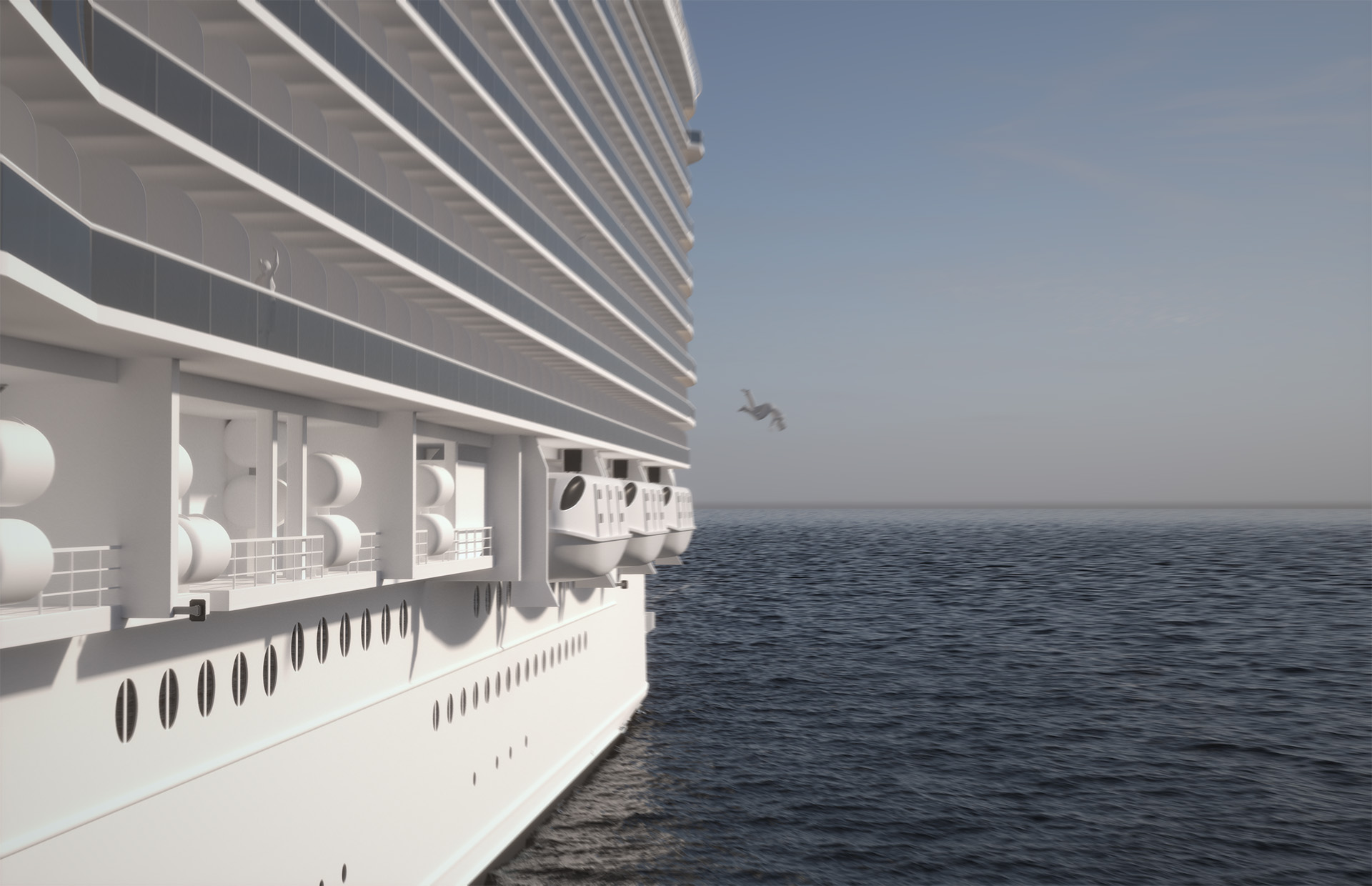
AUTOMATED MAN-OVERBOARD DETECTION & RESCUE SUPPORT
ALL-IN-ONE MARITIME DETECTION SOLUTION
High accuracy detection with 95% probability.
MOBtronic is an automated man-overboard system for the instant detection, classification and rescue support of a human falling overboard a vessel or maritime structure.
Each MOBtronic unit is self contained and includes micro radars, thermal cameras with video analytics and automatic data processing. The system has been tried and tested extensively and provides a high level of accuracy with less than 3 nuisance activations per week, on average.
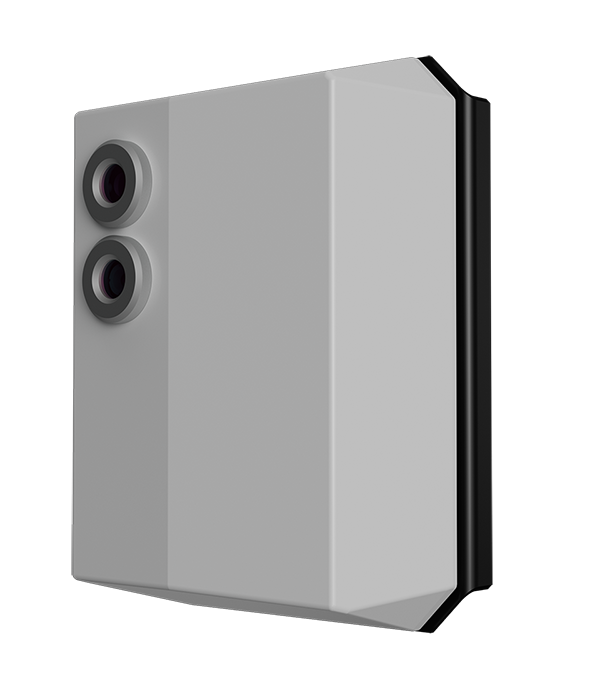
300,000 HOURS+ OF OPERATION

LARGEST MOB DATASET WORLDWIDE

MINIMAL FALSE ALARMS

WORKING TO ISO REQUIREMENTS
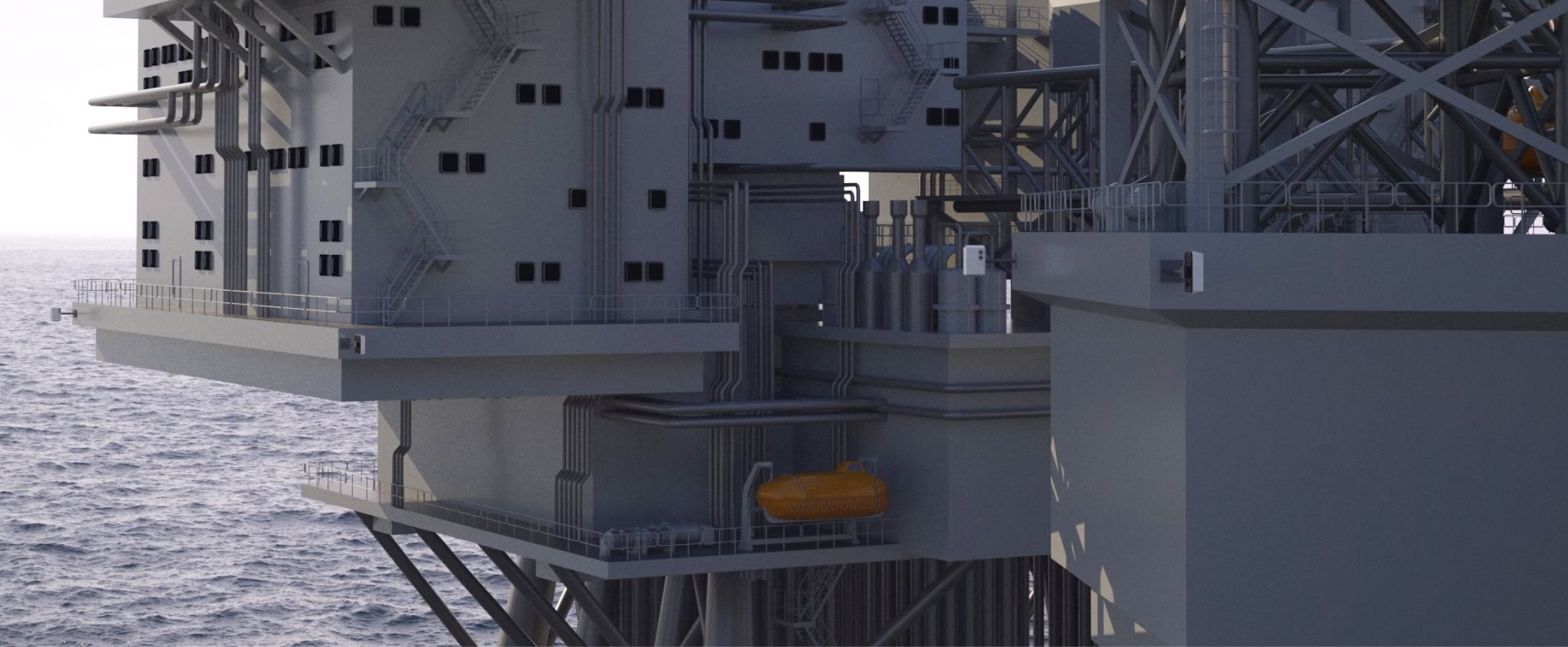
Voted best product of the year at the IHS Safety At Sea Awards 2018
LAYERED PROTECTION
MOBtronic installations consist of multiple sensor stations mounted around the vessel in strategic locations, to accurately detect and monitor persons falling overboard. Once activity is detected, NiDAR CORE gathers information on the person including speed, fall direction, shape and strength to aid rescue.

POWERED BY NiDAR CORE
NiDAR CORE uses intelligence from multiple sources including operational logic, data science, algorithms, video analytics, AI, ergonomics and user experience to produce unparalleled situational awareness, outperforming traditional security and safety software without compromising on quality.
An adaptable platform which is always learning, NiDAR CORE can act autonomously or in line with multiple systems, supporting operations by creating a seamless network with a single goal: the protection of lives, critical infrastructure and assets.
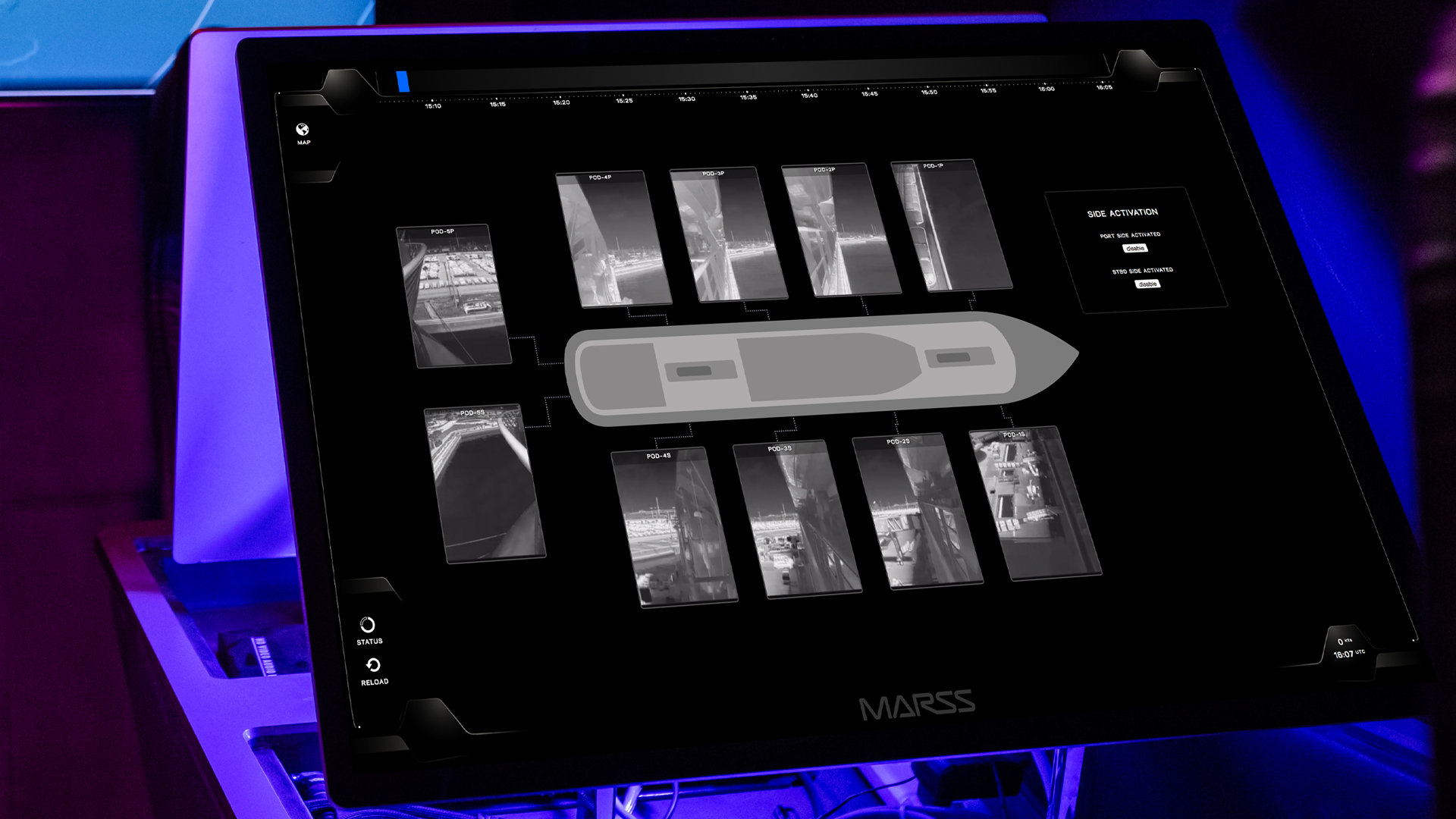
SEE EVERYTHING
Key Features
MINIMAL FALSE ALARMS Fewer than one false alarm per day (in compliance with ISO 21195:2020)
WORKING TO ISO REQUIREMENTS Developed in accordance to CVSSA and ISO 21195:2020 requirements
FALL AND CLIMB DETECTION Detect persons falling from or scaling up specific locations
THERMAL CAMERA Visuals in day/night with video analytics
MICRO-RADARS High probability of detection for MOB
DATA RECORDING & REPLAY Store events for 120 days for reporting and replay
IP66 MARINISED UNIT Integrated heat sink for passive cooling and shield against waves
“We have over ten years of research, development and testing to ensure MOBtronic operates to the highest standard of safety, should an incident occur. We are proud knowing this system is installed across the globe and is protecting lives every day”
- Alberto Baldacci, VP Science at MARSS
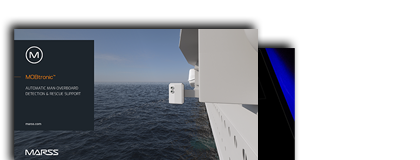
RELATED NEWS AND ARTICLES
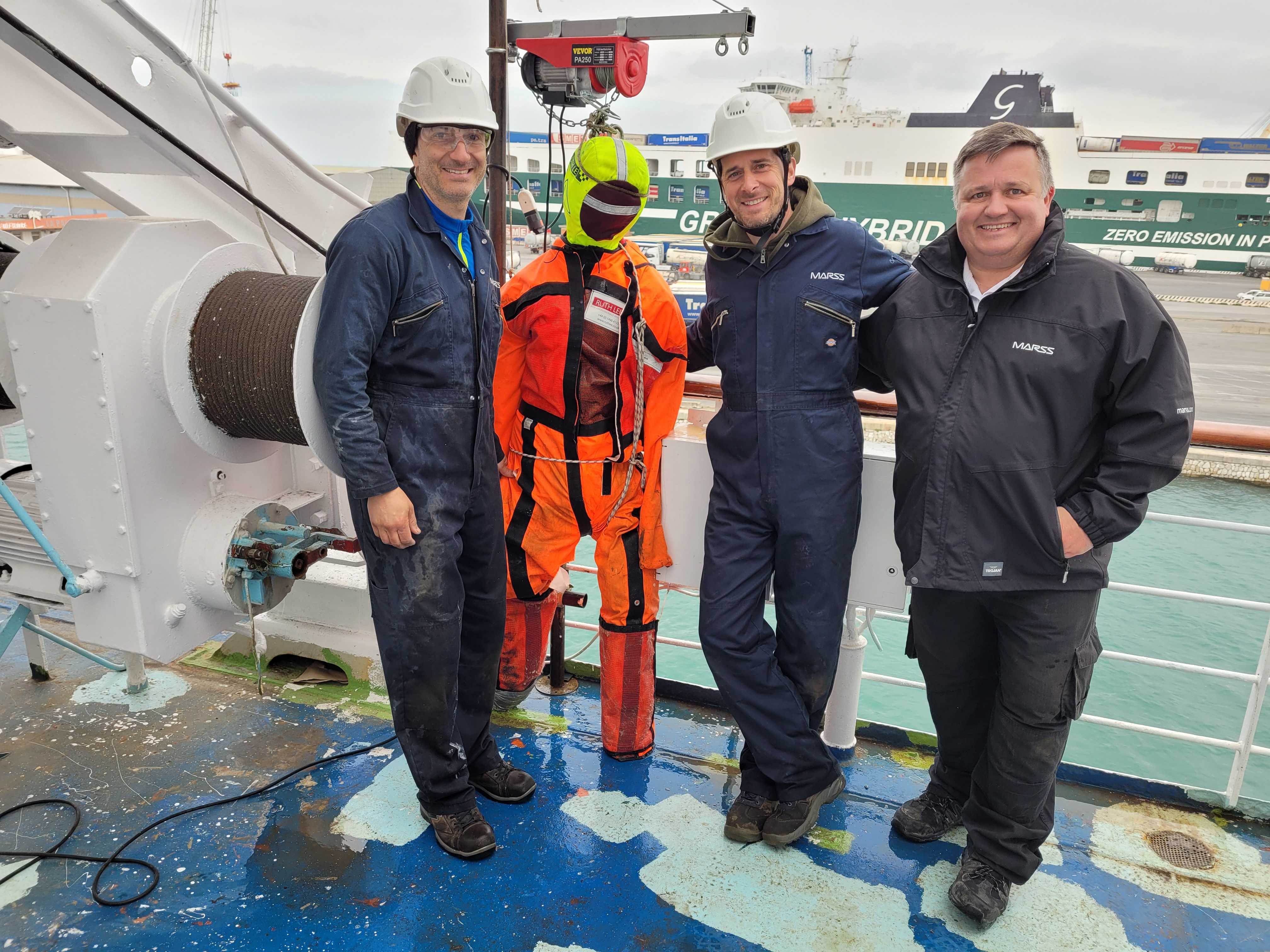
MARSS MOBtronic man overboard technology achieves phase 2 ISO21195 certification
MARSS has completed the second phase of tests on MOBtronic for the ISO21195:2020 certification, that sets the standards for the detection of persons going overboard from ships.
REQUEST MORE INFORMATION
Quick links.
Switch language:

Sound the alarm: should man overboard detection tech be fitted on cruise ships?
Pressure on cruise operators to install new man overboard detection technology is mounting after two holidaymakers died in March after falling from ships. Julian Turner takes a closer look at the controversy and asks whether the latest surveillance techniques are suited to cruise operations.
- Share on Linkedin
- Share on Facebook
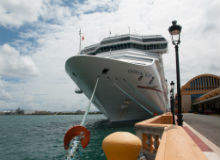
Even for an industry accustomed to dealing with criticism and controversy, the month of March proved especially arduous for the cruise sector in general – and Carnival Corporation in particular.
Go deeper with GlobalData

Submarine Market Size and Trend Analysis including Segments (Nuclea...
The global submarine and mro market in saudi arabia to 2025: market..., premium insights.
The gold standard of business intelligence.
Find out more
Related Company Profiles
Teledyne flir llc, dct, incorporated, u.s. coast guard, carnival plc, clia s.r.o..
First Cameron Smook, a 21-year-old student at Virginia Tech, was captured by on-board cameras falling from the Carnival Glory on 8 March during a holiday in the Bahamas. The US Coast Guard spent three days combing the ocean near Great Abaco Island, but later suspended the search.
Then, just nine days later, a 54-year-old man on the final leg of a five-day cruise to Mexico fell to his death from sister ship the Carnival Triumph. His body was later recovered from the Gulf of Mexico.
The tragedies have catapulted the issue of cruise passenger safety back to the top of the global news agenda and strengthened calls for cruise operators to comply in full with the 2010 Cruise Vessel Safety and Security Act (CVSSA) by installing man overboard (MOB) detection technology fleet-wide.
“Today, as our thoughts and prayers are with the family and friends of Cameron Smook, the stark tragic fact is that readily available life-saving technology could have spared him,” stated Senator Robert Blumenthal (D-CT) last month in the wake of the student’s disappearance.
How well do you really know your competitors?
Access the most comprehensive Company Profiles on the market, powered by GlobalData. Save hours of research. Gain competitive edge.

Your download email will arrive shortly
Not ready to buy yet? Download a free sample
We are confident about the unique quality of our Company Profiles. However, we want you to make the most beneficial decision for your business, so we offer a free sample that you can download by submitting the below form
“Reprehensibly, five years after the CVSSA of 2010 was enacted, cruise lines still refuse to upgrade outdated video surveillance technology for the latest in automatic man overboard detection.
“The cruise industry should be ashamed and embarrassed by this failure to embrace this lifesaving technology. Such technology could have immediately detected Cameron’s fall and made sure valuable time was not wasted reviewing camera footage.”
Safety in numbers: examining man overboard incidents on cruise liners
The controversy comes at a time when the cruise industry is aggressively defending its safety record in the wake of the Costa Concordia tragedy in 2012 and a high-profile engine fire aboard the Carnival Triumph in 2013, an annus horribilis that culminated in the resignation of CEO Mickey Arison.
A new programme geared towards preventing mental health issues among seafarers has recently set sail.
“It is important to note that man overboard incidents on cruise ships are very rare – and nearly always known to be the unfortunate result of intentional or reckless acts,” says Bud Darr, senior vice-president for technical and regulatory affairs at CLIA, in a statement prepared for Ship Technology Global. “Uniform minimum railing and balcony heights, structural barriers, along with many other safety measures prevent passengers who are acting responsibly from ‘falling’ off a cruise ship.
“Although any one incident is unfortunate, out of more than 22 million cruise passengers in 2014, there were 18 overboard incidents, or about one for every 1.25 million passengers.”
A recent article in World Cruise Industry Review magazine points out that man-overboard figures have fallen, but that incidents still occur and are enthusiastically seized upon by the media. Earlier this year, a 22-year-old man fell overboard Royal Caribbean’s Oasis of the Seas, only to be picked up by rival the Disney Magic hours later.
Even though the Oasis of the Seas was fitted with the minimum safety railing of 42in, attorney Jim Walker of maritime law farm Walker & O’Neill and the man behind the popular Cruise Law News website, used the incident to step up his campaign for better on-board monitoring systems.
“CLIA claims that it does not even keep statistics of man overboard cases,” he states. “The most accurate list by far is Professor Ross Klein’s statistics on his website showing that an average of 20 people a year go overboard from cruise ships. It’s cavalier for CLIA to brush the deaths off as ‘rare’ when they are occurring an average of over one and a half times a month.
“CLIA takes credit for the heights of vessel railings but the higher rails came about only through the legislative efforts of a victim organization which the cruise lines have been fighting against for a decade.
“Video surveillance cameras, not connected to automatic man overboard systems, are useless to deal with people falling overboard. The cruise industry as a whole refuses to implement true life-saving devices including infrared, motion-detection, radar, and tracking technologies which are ready, reliable and long overdue.”

Track and trace: Mobtronic takes man overboard detection technology to next level
The CVSSA stipulates that all cruise ships which carry more than 250 passengers, have overnight accommodations and embark or disembark passengers in the US have to install “technology that can be used for capturing images of passengers or detecting passengers who have fallen overboard”.
However, a proposed US Coast Guard ruling means cruise lines can either employ MOB detection systems or capture video images for use in search-and-rescue operations, or a combination of both.
At present, 90% of cruise lines do not employ an MOB alarm system designed to sound on the bridge or at other centralised security station when it detects a person overboard. The system uses thermal cameras mounted on the hull and other parts of a ship to detect body heat. The images are then fed through on-board computers that use algorithms to rapidly assess what the camera is seeing.
One such technology is the Mobtronic system developed by MARSS, a subsidiary of US company FLIR Systems. Using a combination of radar and infrared sensors, Mobtronic can detect MOB incidents with an average detection probability of 95% and is able pinpoint where the person entered the water.
The intuitive system allows real-time tracking using wind and currents to calculate drift and can even identify the range of cabins from which a passenger fell, supporting missing person identification.
Mobtronic can be operated as a stand-alone solution or integrated into a vessel’s existing electronic bridge system. Crucially, MARSS claims it is both reliable and well-tested in maritime environments.
Fit for purpose? CLIA questions reliability of surveillance solutions
CLIA begs to differ. In a recent white paper cited by Travel Weekly, the industry body listed nearly a dozen obstacles to the reliability of MOB detection systems including salt corrosion or encrustation on camera lenses, surface glare from the water, the pitch and yaw of a ship, extreme weather, vessel vibration and a continually changing horizon.
Tragedies aboard cruise ships live on in infamy.
“Despite the rare occurrence of anyone going overboard, the industry continues to evaluate the effectiveness of overboard detection systems,” says Darr. “So far, no one system has been shown to perform reliably enough for wide- scale deployment.
“MOB detection systems are emerging technologies that face unique challenges in a marine environment, let alone on a highly complex, multistory cruise ship, so testing of these systems is ongoing. Any new emergency response technology must fit well with a ship’s overall safety culture.
“Testing of various MOB technologies has shown an unacceptably high rate of false-positives, which can negatively affect a ship’s safety culture by unnecessarily diverting the attention of crew and creating expectations of an alarm being false.”
Unsurprisingly, Jim Walker disagrees and believes MOB detection systems are a key tool in the fight to prevent accidents and fatalities as cruise passenger volumes increase around the world.
“Most cruise line are resisting compliance with the CVSSA requirement for an automatic MOB, claiming that man overboard technology is not reliable,” he states on the Cruise Law News website. “That’s patently a false and misleading argument. The technology clearly exists but the cruise industry simply does not wish to spend the money necessary to save lives.”
Sign up for our daily news round-up!
Give your business an edge with our leading industry insights.
More Relevant
Windward report reveals global shipping’s Q1 trade trends
Ship corrosion prevention: cathodic protection, coatings and insulation for the shipping industry, leading esg consultants and sustainability advisers for the shipping industry, fleet, crew and ship management software for the shipping industry, sign up to the newsletter: in brief, your corporate email address, i would also like to subscribe to:.
Ship Technology In Brief
Ship Technology Global : Ship Technology Focus (monthly)
I consent to Verdict Media Limited collecting my details provided via this form in accordance with Privacy Policy
Thank you for subscribing
View all newsletters from across the GlobalData Media network.
Surround Lidar
- Infrastructure
- Lidar Software
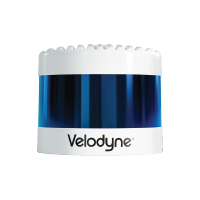
- Distributors
- What is lidar?
- White Papers
- Case Studies
Solid State Lidar
- Lidar Comparison
- Autonomous Vehicles
- Automated with Velodyne
- Join Automated with Velodyne
- Next Gen Automation
- Industry Associations
- Distributor Portal
- Featured News
- Press Release
- Media Coverage
- Video Gallery
- Press release
- Media coverage
In March 2017, the U.S. Coast Guard suspended a search for Brandon Paul, a 23-year-old Florida man who fell overboard from a cruise ship in waters north of Cuba. The search lasted 16 hours and covered 3,469 square miles, yet it failed to find the latest victim in a series of high-profile incidents of cruise ship passengers and crew lost at sea. [i] The website Cruisejunkie.com reports that between 2006 and 2015 over 21 people, on average per year, have been reported missing after going overboard. [ii]
Recently, Frank Bertini, UAV & Robotics Business Manager for Velodyne Lidar, has been working closely with Jack Gillespie, Director of Business Development for the automation engineering company Mechaspin to develop a Man Overboard Detection (MOD) system for the cruise liner industry. The system can detect and measure any object which falls from the ship. Once detected, the system sends out alerts regarding the overboard persons or objects. Based upon these alerts, autopilot systems can cut power to a ship’s engines and notify the crew of the emergency.

According to the Cruise Lines International Association, Inc. (CLIA) there are over 60 cruise line companies across the globe which will transport 25.8 million passengers in 2017. Roughly 25 new ships are built each year, each offering capacity for roughly 1,000 passengers. [iii] While the overall incidence of passengers overboard is relatively low, the cruise line industry recognizes the need to protect every passenger. Additionally, companies understand that with so many cruise operators, competition for customers is fierce. The negative press from a missing passenger can result in millions of dollars in lost revenue. Thus, operational safety is a top concern for ship captains and business managers, alike.
Along with operational safety, pollution and littering from cruise chips is an increasing concern. Partying and fanfare is typical, so it is common for a beer bottle or occasional piece of furniture to fall from the ship. Various governments have instituted new environmental regulations for cruise liners. In some bodies of water, every trash object that falls from a ship can result in a fine. With Mechaspin’s MOD system, the cruise line company can develop their own evidence database of fallen items. In the future, provided costs are justifiable, an automatic net could be designed to deploy and collect overboard items in real-time using data collected by Velodyne’s 3D lidar sensors.

The MOD system from Mechaspin involves multiple VLP-16s , called “Pucks,” stationed strategically around the perimeter of the ship. These Pucks are wired to a supervisory control and data acquisition (SCADA) system. The SCADA system synchronizes the point cloud data from multiple lidar sensors and applies an object-detection algorithm. The object-detection algorithm accurately calculates the volume of any object passing through the lidar sensors’ 3D field of view. Each Puck has 16 lasers which sense within a field of view extending 30-degrees outward from the ship’s hull and up to a distance of 330 feet. For system redundancy, each Puck’s field of view overlaps with adjacent Pucks’ fields of view to maximize total lidar points on target.
The MOD system is an integrated solution to the passenger-overboard problem—and the result of Mechaspin’s many years of experience in the unmanned ground systems market for the military. Mechaspin’s sister company is OpenJaus , which develops and supports real-world unmanned systems using JAUS (Joint Architecture for Unmanned Systems) programming language—particularly relevant experience for the MOD application. Hopefully, someday soon, the roughly 25 new cruise ships built every year will leave dry-dock equipped with Mechaspin’s revolutionary MOD system. And the days of passengers being lost at sea will become a thing of the past.

For more information on the MOD system visit Mechaspin.com or contact Frank Bertini at [email protected] or Jack Gillespie at [email protected] .
[i] “ Coast Guard Suspends Search for Missing Cruise Ship Passenger .” Sedria Renee, NBC News. March 23, 2017
[ii] “ Cruise and Ferry Passengers and Crew Overboard 1995-2017 ” www.cruisejunkie.com . Accessed June 22, 2017
[iii] “ 2017 Cruise Industry Outlook ” Cruise Lines International Association. December 2016
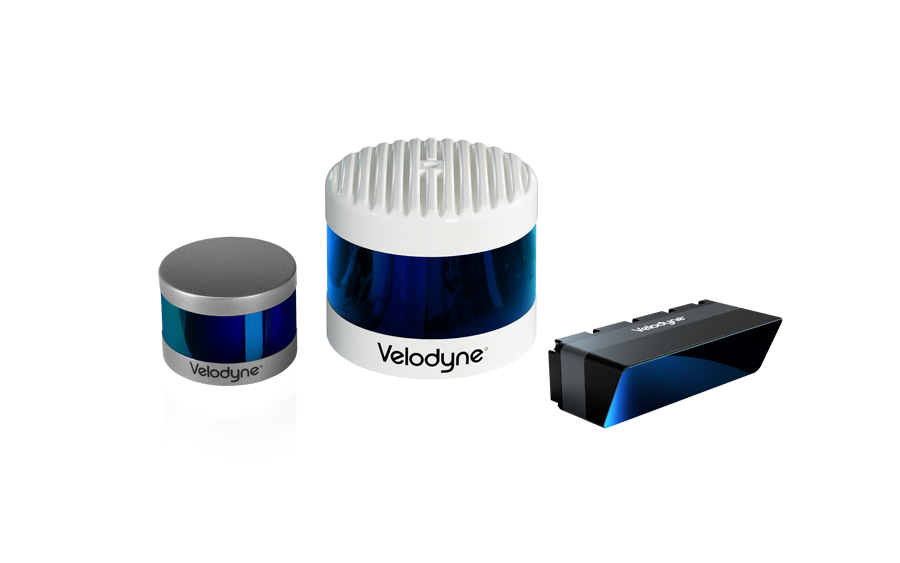
About Velodyne Lidar
Velodyne Lidar (Nasdaq: VLDR, VLDRW) ushered in a new era of autonomous technology with the invention of real-time surround view lidar sensors. Velodyne, a global leader in lidar, is known for its broad portfolio of breakthrough lidar technologies. Velodyne’s revolutionary sensor and software solutions provide flexibility, quality and performance to meet the needs of a wide range of industries, including robotics, industrial, intelligent infrastructure, autonomous vehicles and advanced driver assistance systems (ADAS). Through continuous innovation, Velodyne strives to transform lives and communities by advancing safer mobility for all.
Browse products

- Alpha Prime
- Puck Hi-Res
- Terms of Use
- Privacy Policy
- THE PRINCESS PASSPORT
- Email Newsletter
- Yacht Walkthroughs
- Destinations
- Electronics
- Boating Safety

MARSS’ All-in-One Detection System
- By David Schmidt
- December 19, 2023
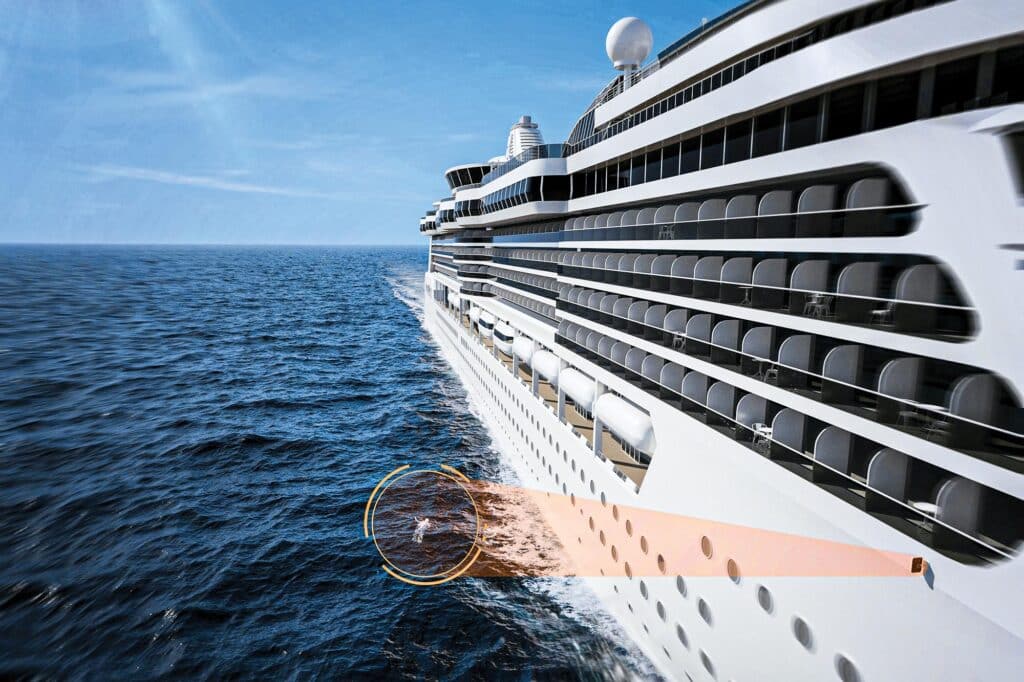
“Person overboard!“
Few phrases conjure darker fears among mariners. The good news, of course, is that contemporary beacons and geofence-breaching pendants can swiftly alert a skipper and crew about an MOB emergency, and can often help with rescue efforts. The less-than-cheery news, however, is that this equipment requires crewmembers, guests and family to carry or wear the equipment. This scheme can also presuppose that a person who has gone overboard is still conscious, treading water and capable of activating a beacon, probably in a seaway, maybe at night.
For the owners and captains of superyachts that carry at least 18 feet of freeboard, MARSS Group’s groundbreaking MOBtronic system provides safety without active user participation.
The Cruise Vessel Security and Safety Act of 2010 mandates that all cruise ships operating in US waters carry equipment that can detect or capture imagery of people who have gone overboard. The resulting ISO standards are strict: Systems must achieve a 95 percent probability of detection while recording no more than one false alarm per day, on average.
Flash-forward to today: UK-based MARSS has developed a solution called MOBtronic, which it has been selling to a few superyachts longer than 300 feet. While MOBtronic currently has a significant freeboard requirement, it employs active-detection technologies rather than pendants or beacons. It can autonomously sense a person overboard and immediately advise its human-on-the-loop operator.
MARSS is also exploring a solution with lower freeboard requirements for smaller yachts. While this technology is not currently available, MOBtronic offers a look at what’s possible when sensors and hybrid intelligence converge.
With regard to hardware, each installation involves a network of MOBtronic sensor pods that are installed along a vessel’s upper decks. Collectively, this equipment creates 360 degrees of coverage. There’s a virtual or physical server running NiDAR CORE, which is MARSS’ hybrid intelligence system that blends detection technologies and human input. There’s also a dedicated touchscreen display. Each sensor pod measures 14.1 by 10 by 3.6 inches, weighs 14.55 pounds and carries an IP66/67 rating. Each pod houses Doppler-enabled, microsize solid-state radars that constantly sweep an area measuring roughly 262 feet long and 26 feet wide (and at least 18 feet high). The package also incorporates a thermal-imaging camera and a processor. Additionally, owners can spec a daylight camera, but this isn’t required by ISO standards.
For scale, a large cruise ship might be fitted with 12 sensor pods, while a 300-plus-foot yacht might carry six.
“The sensor pods themselves have computers built into them, and they are doing most of the heavy-lift processing,” Mike Collier, MARSS’ business development manager, says of the radar- and video-feed analytics. “It’s very light on data that has to go back to the central server.”
The way MOBtronic works starts with radar, which effectively serves as the system’s tripwire. From there, it progresses to thermal imagery and analytics. Each MOBtronic radar pipes its signal to its processor, which has been trained via digital signal processing to identify an overboard person’s volume, size, shape and velocity (think bird mode, but for finding human beings).
Should the radar signal detect a possible match, the pod’s thermal-imaging camera begins working to verify, via video analytics, if this is actually a person in the water.
“It’s a five-stage process,” Collier says. “It takes data from the radar and does two calculations on that, and then it looks at the thermal-imaging-camera data and does some analytics on that as well. And if both things match, then an MOB alarm is raised.”
A human operator is then notified, and that person decides whether and how to escalate the situation. Go-to procedures include conducting head counts, notifying rescuing authorities and nearby traffic, and launching rescue craft and drones.
MOBtronic provides the vessel’s networked navigation system with its GPS location at the time of the emergency. In turn, the nav system can often calculate the person overboard’s predicted set and drift. Some nav systems can also cue a networked camera to follow that real-time position.
MOBtronic doesn’t track the person in the water, at least not outside the area of sensor coverage—but Collier says this isn’t the point. “The system was always focused on the detect part because that’s the most difficult part,” he says. “The bit that was always missing from the puzzle was accurate detection of someone falling from a vessel, and that’s what we focused on. The operator of the vessel can make the decision what they do next.”
As for the system’s 18-foot freeboard requirement, which is currently a limiting factor for many yachts, Collier says it has more to do with meeting and exceeding ISO standards than it does with sensor blind spots.
“It’s really difficult to achieve 95 percent probability of detection and only one false alarm a day,” he says. “We need to give the radar sufficient time to create a track … and for that track to continue all the way down to the water.”
Relaxing the freeboard requirement for use outside of the cruise-ship sector is already in the works. “It won’t be the same technology,” he says. “It might be something slightly different.” One possibility is to add a form of AI called machine learning to the camera feed, which could help MOBtronic understand what’s happening faster and with greater accuracy.
In addition to superyacht-level freeboard requirements (and costs), the system will generate some human-on-the-loop work for the bridge or helm watch. That said, these drawbacks are small prices to pay for an active, autonomous detection system that requires zero participation from the people it’s protecting—especially on a charter yacht, or one with landlubber guests who make unseamanlike decisions. Going forward, this technology could be a compelling safety proposition for many yachts. After all, few things assuage fear faster than situational awareness.
- More: Electronics , MARSS , November 2023 , Safety
- More Electronics

Security Packages for Superyachts

Lowrance Unveils the Eagle

Saving Yourself With ACR’s PLB
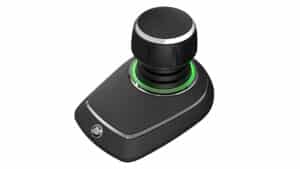
Single-Engine Joystick Control
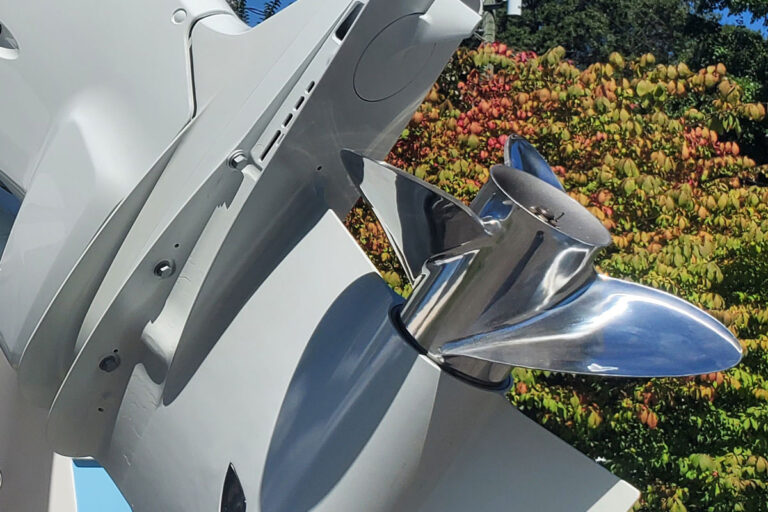
Boat Propeller Repair
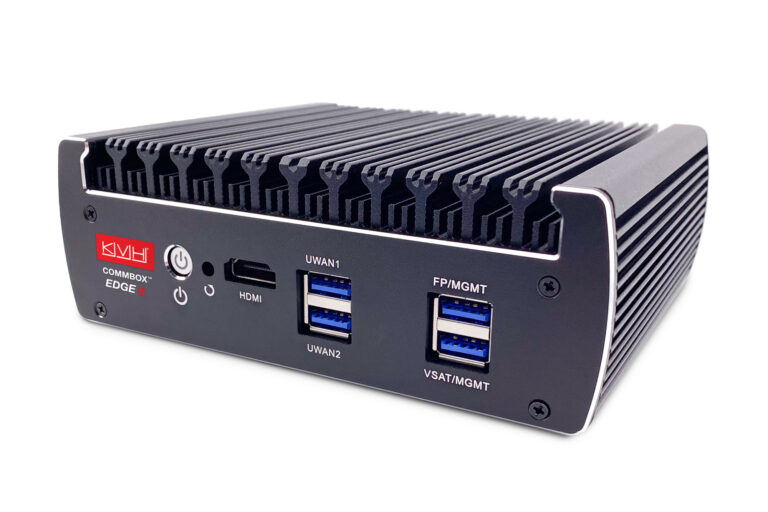
Azimut Atlantis 51 For Sale
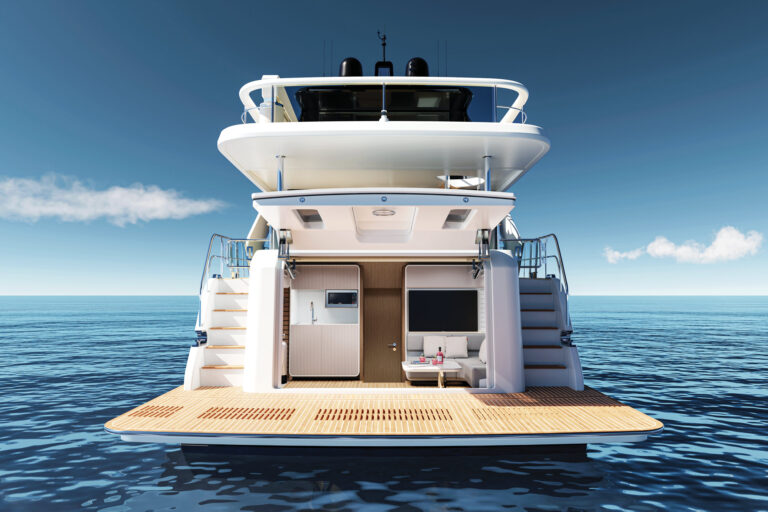
Five Top Yachts For 2024

- Digital Edition
- Customer Service
- Privacy Policy
- Email Newsletters
- Cruising World
- Sailing World
- Salt Water Sportsman
- Sport Fishing
- Wakeboarding

MSC Announces Advanced Man Overboard Detection System
- October 10, 2017

MSC Cruises today announced the launch of a new video surveillance system aboard its ships, developed in conjunction with Bosch and Hewlett Packard Enterprise.
The integrated system is part of a plan to further optimize man overboard detection, the company said.
After a successful pilot phase of extensive stress-testing and continuous software upgrades, the intelligent video capturing and analysis system is now operational aboard the MSC Meraviglia, the company said. Installations will follow across the company fleet.
Pierfrancesco Vago, MSC Cruises’ Executive Chairman said: “The security and safety of our guests and crew onboard has always been our highest priority. Therefore – as innovation has been from day one central to the way in which we operate and develop new features for our ships – we have developed a highly-innovative solution that, through the use of military-grade technology, will allow ship command to take immediate action if needed. While a ship at sea is a challenging environment for accurate video security monitoring and operating high-tech equipment, our teams have managed to successfully develop a system that is at the same time accurate, stable and reliable.”
The system consists of a shield of intelligent optical and thermal video cameras which provide nonstop comprehensive surveillance alongside the relevant exterior parts of the ship.
All captured video images are streamed in real-time to a central security center where the video stream is monitored together with all other inputs from the 1,200 HD CCTV cameras onboard the ship.
MSC’s security team and experts from Bosch and Hewlett Packard Enterprise have worked over 14 months to meet demanding security requirements and create the right surveillance setup.
A significant part of the process has been to program the software in such a way it provides reliable and accurate data, with limited false alarms. MSC has come up with a new concept in which two independent image processing systems analyze video images.
This double security system has allowed to significantly lower the error margin for false alerts, the company said, typically caused by waves, reflections of the sun or moon, or a bird triggering the alarm.
Through over 25,000 hours of video analysis, extensive software testing and continuous algorithmic updates, the system has now reached a confirmed accuracy level of 97 percent.
In case of an alarm, an acoustic signal and light will alert the ship’s Security Officer in the security room who can immediately connect to the system and acquire all images and data and, if necessary, retrieve or review the relevant video images. The Security Officer has direct access to the ship command at the Bridge to allow for immediate action.
Cruise Industry News Email Alerts
- Breaking News

Get the latest breaking cruise news . Sign up.
54 Ships | 122,002 Berths | $36 Billion | View
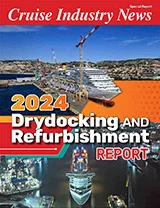
Highlights:
- Mkt. Overview
- Record Year
- Refit Schedule
- PDF Download
- Order Today

- 2033 Industry Outlook
- All Operators
- Easy to Use
- Pre-Order Offer
- Advertising
- Cruise News
- Magazine Articles
- Quarterly Magazine
- Annual Report
- Email Newsletter
- Executive Guide
- Digital Reports
Privacy Overview
- CruiseMapper
- Cruise news
MSC Launches New Man Overboard Detection Technology
MSC Cruises announced the launch of an innovative vanguard video surveillance system which offers even greater onboard security. In another cruise-industry-first, MSC developed the highly-sophisticated advanced system via collaboration with Bosch and Hewlett Packard Enterprise, global leaders in security technology.
The new integrated system is part of a larger MSC Cruises operation to optimize onboard security monitoring and will allow for the speediest intervention in unlikely event a person (object) falls overboard.
Following a successful pilot phase of stress-testing and software upgrades, the intelligent video capturing and analysis system is already operational – initially on the latest flagship of MSC Cruises, MSC Meraviglia .
The new system consists of a shield of intelligent optical and thermal video cameras providing nonstop comprehensive surveillance along the relevant exterior parts of the vessel. All captured video images are streamed to a Central Security Room in real-time. There, the video stream is monitored along with all other inputs from 1,200 HD CCTV cameras onboard the ship.
MAN OVERBOARD SYSTEMS / ANTI PIRACY SYSTEMS
Man Overboard events continue to be a common occurrence in the cruise industry and other related markets. The problem is compounded by the fact that when these events occur the timely availability of important data is missing. Accurate confirmation of the event including time of occurrence, location on the ship and location in the sea is critical, but often unavailable for hours following an occurrence, if at all.
Fortunately, proactive detection systems such as the Man Overboard Detection System from PureTech Systems, can accurately detect man overboard events and provide immediate, actionable data to response personnel.
In partnership with:

Suitable for:
- Container Ships
- Bulk Carriers
- Tanker Ships
- Cruise Ships
- Naval Ships
- Offshore Rigs
- Special Purpose Vessels
OSCAR Test - Day
OSCAR Test - Night
System Spec
Automatic Detection of Man Overboard Events
Patented Video-Based Solution
Detection Rates Above Industry Benchmarks Over Wide Variations in Sea State and Weather Conditions.
Very Low False Alarm Rate
Instant Video Validation of Event for Immediate Action
Reporting of Event Latitude and Longitude (i.e. Location in the Sea)
Fall Origin Guidance (i.e. Location on the Ship)
Alarm and Video Retention and Review
Situational Presentation of Incident Data to Decision Makers
In Service Installation
Drone Integration Capability – Automatic Search and Rescue Dispatch with Live Video

Camera Layout
Accurate video protection.
The system utilizes infrared imagers combined with geospatial video analytics, which not only provide instant visual proof of an event, but also achieves detection rates above industry benchmarks in various ranges of sea states and weather conditions. Detection coverage encompasses the length of ship, including all passenger floor levels and is accurate for both cold and warm water cruise routes.
Situationally Aware User Interface
Use of geospatial data within the detection algorithms allows for a user interface that is easy to understand and simple to use. In situations, such as man overboard events, providing a high level of situational awareness aids first responders in gaining a full understanding of the event as quickly as possible. This is achieved through geolocation of the alarm location, instant access to detection images, looping videos of the event, as well as audio notification. The system includes a full alarm database and video playback capability.

Man Overboard Detection User Interface
Field tested for low false alarms.
Almost as important as detection accuracy, false alarms from weather conditions and cruise operations can minimize the effectiveness of detection systems. The Man Overboard Detection System has undergone real-world testing on board superliner-class cruise ships using industry-developed guidelines along established cold water and warm water cruise routes. The system is affordable and testing demonstrated positive results including minimal false alarms, and very high detection rates.

Example Events, Which Do Not Result in False Alarms
System overview.

System Diagram, Standard Size Cruise Ship
Robust feature set.
Advanced Video Analytics Filter Out Background Motion (Clouds, Water, Birds)
Automatic Generation of Alarm with Instantaneous Looping Video
Location of Overboard Event Computed Along Ship’s Length
Video Recording and Playback
Multiple Means of Alarm Notification (Client Software, Email, Audible Alarm)
Applicable to All Ship Classes
No Floor Height Limit
9m Side Detection Range (Including Angle of List)

CONTACT US TODAY FOR AN INSTALLATION QUOTE / SHIP SURVEY

(+1) 954 636 1821 (USA) (+44) 7506 214 868 (UK)

[email protected]
Cruising to safety: Improving man overboard detection with new international guidelines

Cruising never ceases to grow in popularity. Yet, what few like to consider is the small but real number of holidaymakers who fall overboard. New international guidelines from ISO aim to provide a boost to the technology that detects such incidents and helps them get back on board.
Over 27 million holidaymakers are expected to go on a cruising holiday this year 1) , as the industry booms with more ships, destinations and themes riding the wave. The safety of these ships is rarely put into question, yet an average of 21 “man overboard” incidents occur every year 2) , fuelling an industry that develops detection systems to raise the alarm and locate the victim as soon as possible. Up until now, there have been no internationally agreed requirements to evaluate the effectiveness of such systems.
The new publicly available specification ISO/PAS 21195 , Ships and marine technology – Systems for the detection of persons while going overboard from ships (Man overboard detection) , provides internationally agreed technical specifications for systems designed to detect a person who has gone overboard from a passenger ship. It covers how the system is expected to perform in a range of environmental conditions and incident profiles.
Robin Townsend, Chair of ISO/TC 8/SC 1, the ISO subcommittee that developed the standard, said this is the first document of its kind to standardize and clearly define technical specifications for such systems in the cruise ship industry.
“With everyone working from the same set of requirements, manufacturers can more easily evaluate safety, effectiveness and performance of the systems,” he explained. “This also provides a strong foundation on which new technologies can be developed.”
“Our intention is now to develop the document into a full International Standard. Therefore, we encourage feedback and input from relevant stakeholders, such as those in the cruise ship industry, systems developers or advocacy groups, to ensure it is as robust and effective as possible.”
Interested parties can contact their national ISO member for further details.
ISO/PAS 21195 was developed by technical committee ISO/TC 8, Ships and marine technology , subcommittee SC 1, Maritime safety , whose secretariat is held by ANSI , ISO’s member for the USA. It can be purchased from your national ISO member or through the ISO Store .
1) 2018 Cruise Industry Outlook , Cruise Lines International Association
2) Report on Operational Incidents 2009 to 2016 for CLIA Global, G.P. Wild consulting
Press contact
Journalist, blogger or editor?
Want to get the inside scoop on standards, or find out more about what we do? Get in touch with our team or check out our media kit .
- Cruising to safety: Improving man overboard detection …
- Travel Updates
Father of 20yo who went overboard cruise ship believes he’s still alive
The search for a missing 20-year-old man who went overboard a cruise ship last Thursday has been called off but his father believes he’s still alive.

Qantas reroutes major flight path
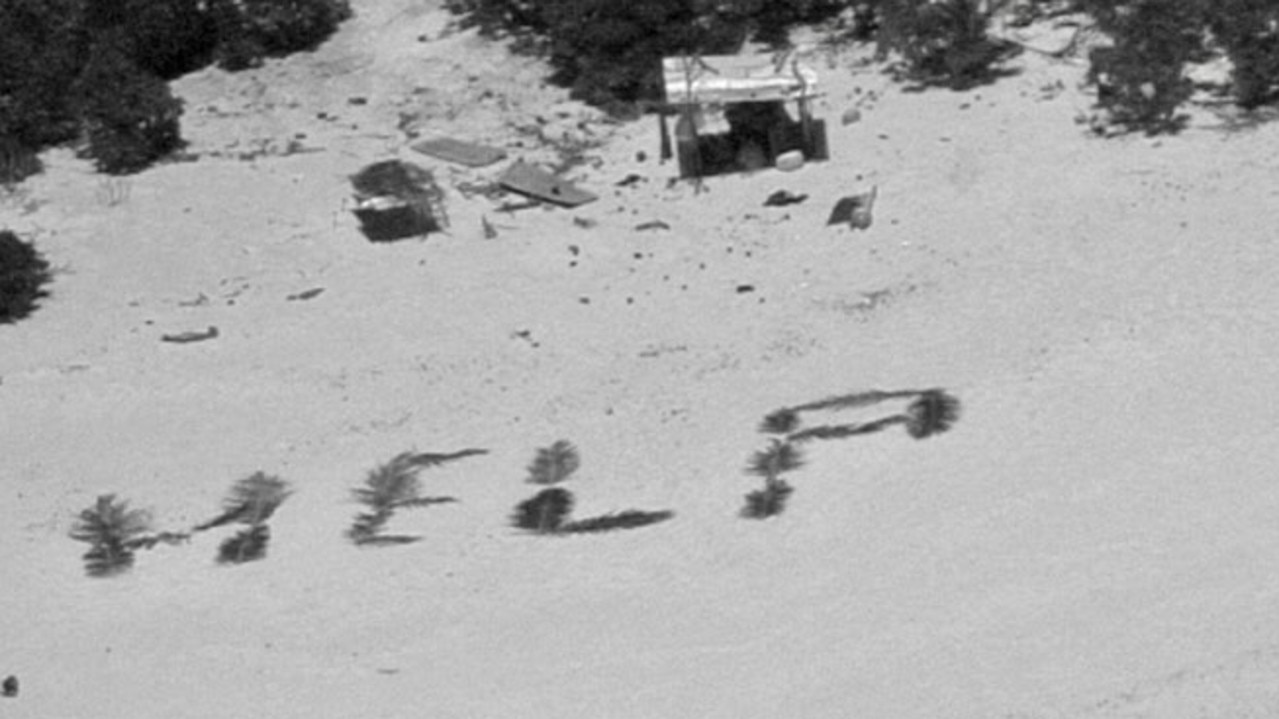
Genius way stranded men created ‘help’ sign
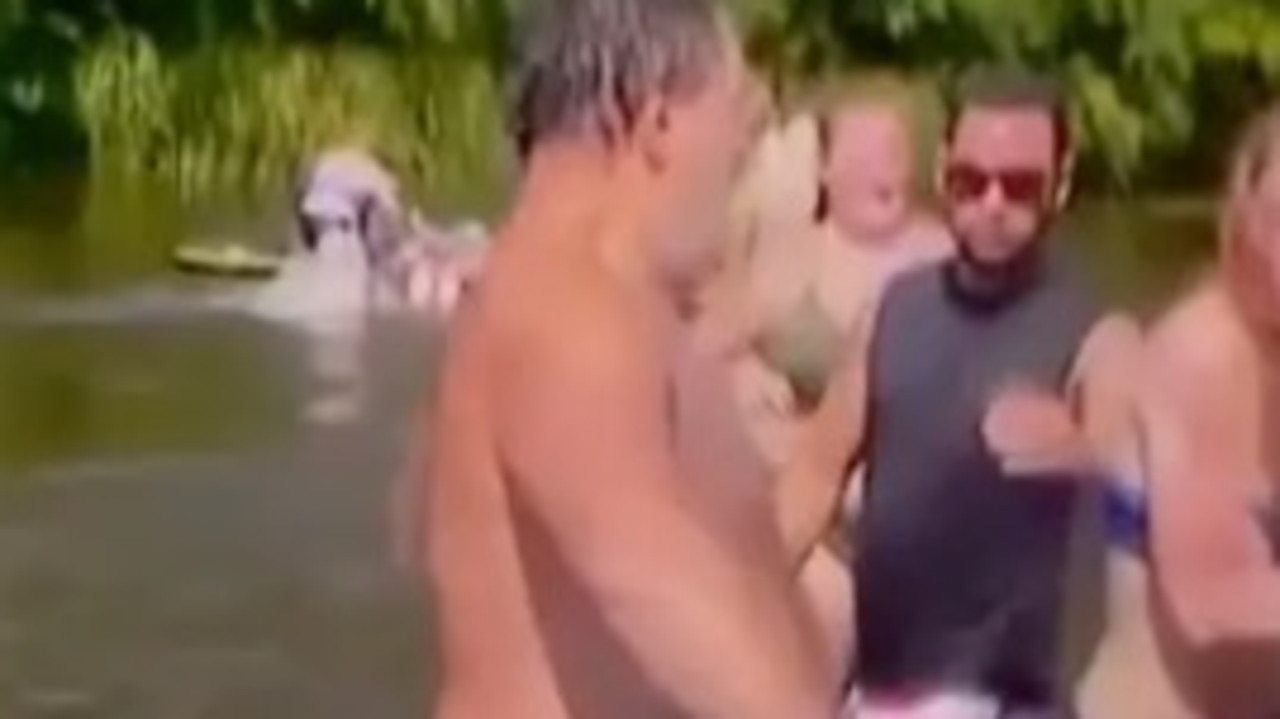
Man faces 100 years jail for fatal teen brawl
The father of a man who went overboard a Royal Caribbean cruise last week believes his son is “still alive”.
Levion Parker, from Florida in the US, was holidaying with his family aboard Liberty of the Seas when tragedy struck.
The 20-year-old former high school football player and avid hunter had reportedly gone overboard at 4am last Thursday.
At the time, the 18-storey ship was returning to Fort Lauderdale in Florida after a four-day cruise to the Amber Cover cruise port in the Dominican Republic.
The US Coast Guard has since suspended its search for the missing young man, but his father Francel Parker, who was also abroad the cruise, believes his son is “still alive”.
“As soon as he went off the side, I prayed over him. I was confident the prayers I said over my son were heard. I stand on the word of God. I believe he is alive,” Mr Parker told local Florida paper the Daily Sun on Wednesday.
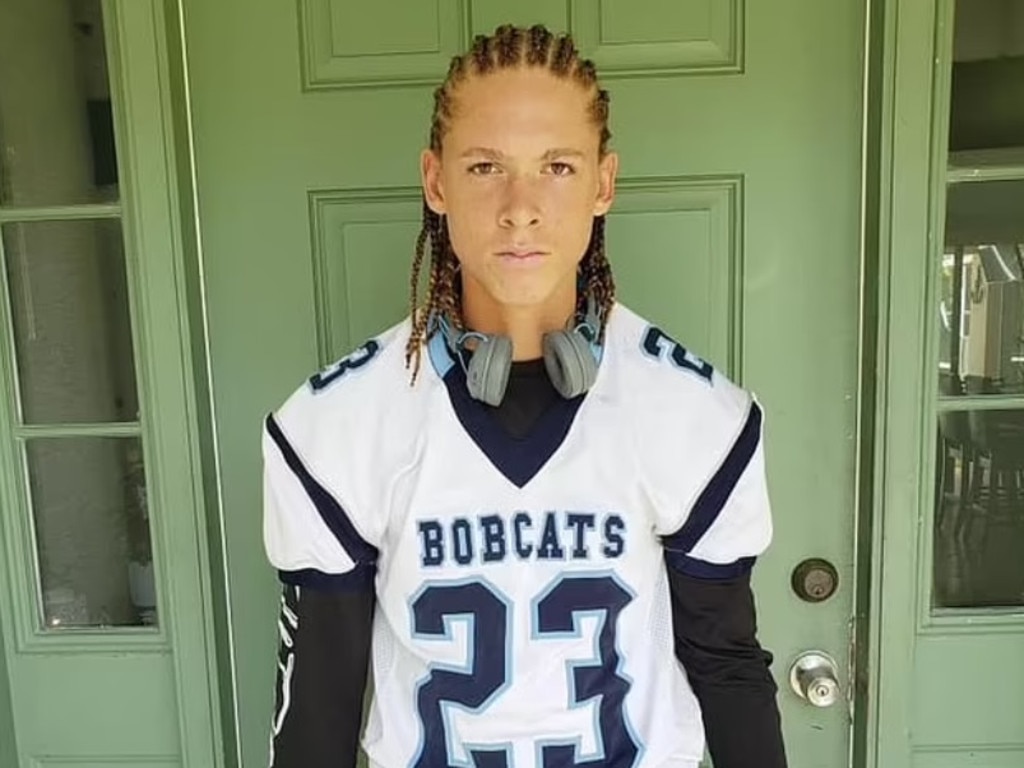
He described his son as being a skilled diver who works on a commercial fishing boat.
Following the incident, a Royal Caribbean spokesperson told news.com.au the ship’s crew immediately launched a search and rescue effort alongside the US Coast Guard, who took over the search.
“Our Care Team is providing support and assistance to the guest’s family during this difficult time. For the privacy of the guest and their family, we have no additional details to share,” the spokesperson said on Monday.
Francel told the Daily Sun that he threw six life rings off the ship in hopes of saving his son before the vessel was able to come to a stop about 20 minutes later.

When passengers woke up to the news, Amy Phelps Fouse, who was on-board the ship, said it was “definitely sombre”.
She told the New York Post many people came out of their cabins to stare at the sea, hoping to be able to aid in finding the person.
“Royal Caribbean has been excellent at communicating updates throughout the day,” she said of the incident on Thursday.
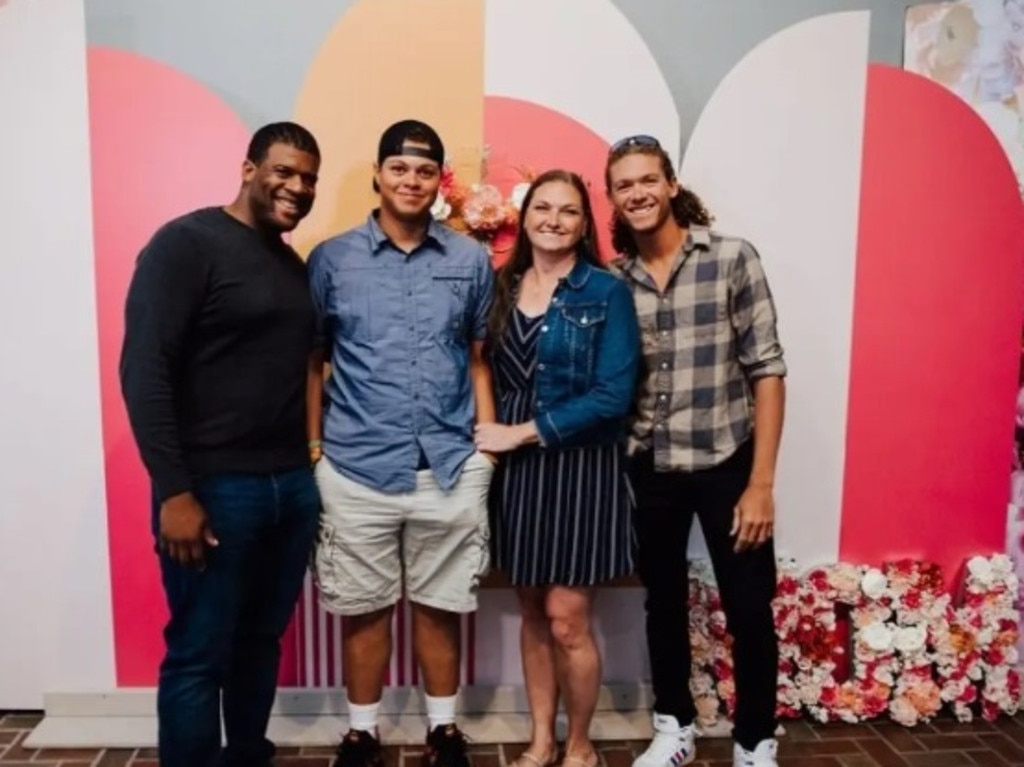
“They have asked that people act with compassion in light of the tragic situation.”
Another passenger who took to Reddit to post about the heartbreaking incident said they became aware of the tragedy when the captain broke the news the following morning.
“They announced it over the PA system while we were at breakfast at the entire room went silent,” they wrote. “Then the rest of the cruise felt oddly casual.”
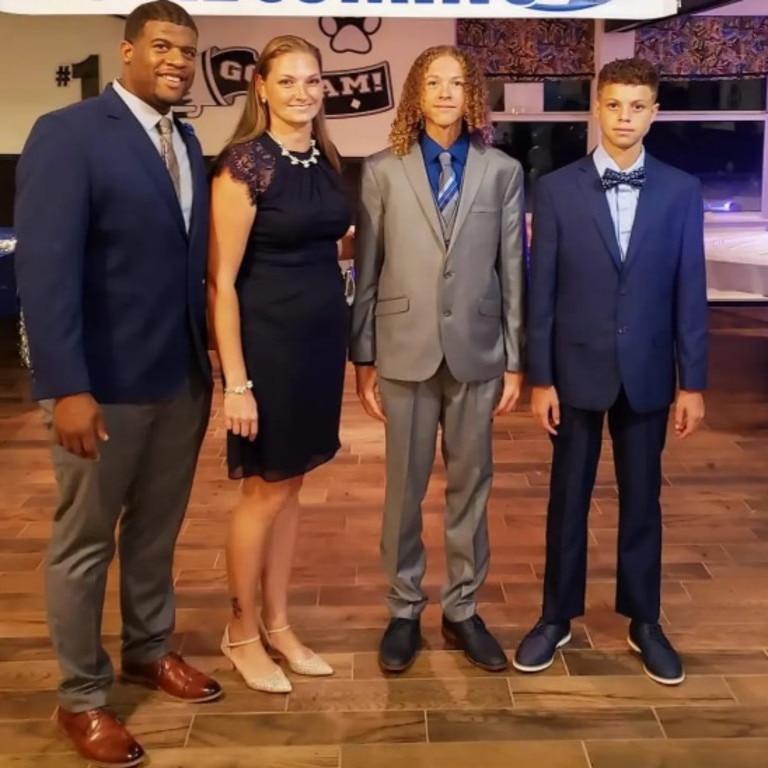
The young man was reportedly “drunk” on the night but details around this are unclear as the minimum age to consume alcohol on Royal Caribbean ships on voyages from North America or the Caribbean is 21.
“We don’t drink,” Levion’s father Francel said. “I’d like to know how my son was served so much alcohol.”

According to the Daily Mail , he was thought to be staying with his family on deck 10, a flight below the whirlpools and hot tubs of deck 11 where he had spent time with his brother and another passenger the night of the incident before things took a horrifying turn.
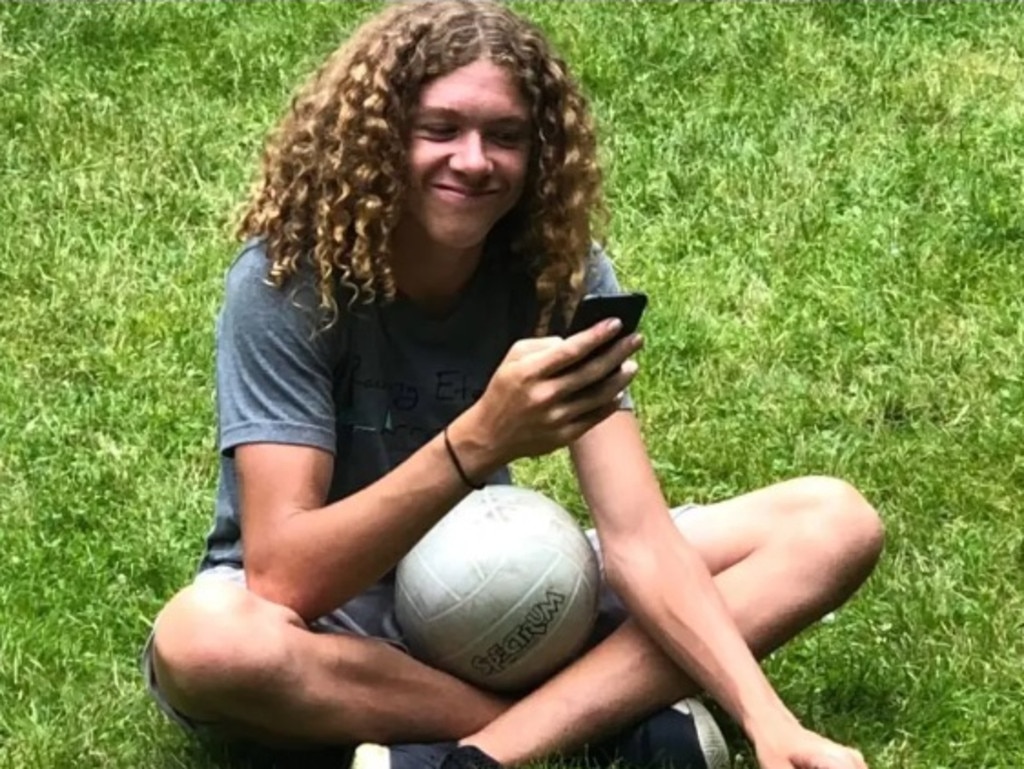
Francel, who owns an airconditioning business, was invited, together with his family, aboard the ship as guests of Florida-based airconditioning wholesalers Tropic Supply to mark the company’s 50th anniversary.
Francel told the Daily Mail the family is consulting lawyers and is planning to issue a statement.
Travel lawyer Jim Walker said in a blog that Royal Caribbean along with the vast majority of US cruise companies have yet to install automatic man overboard systems as required by the Cruise Vessel Security and Safety Act of 2010.
“Such automatic MOB systems utilise state-of-the-art motion detection, video and infra-red technology and radar to instantly detect when someone goes over the rails of a cruise ship,” he wrote.
More Coverage

“The system can then track the person’s movements in the water even at night-time,” adding the infra-red technology would be crucial in assisting the ship in locating and rescuing the person in the water.
“Without such a system, the chances of locating an overboard person in the water at night it like finding a needle in a haystack.”
According to the Washington Post , about 386 people were reported to have gone overboard on the major cruise lines between 2000 to 2020.
Qantas has made a huge call on flights travelling a major route from Australia over fears of a potential Iranian attack as the conflict in the Gaza Strip escalates.
Three stranded men have been rescued from a tiny Pacific island after crafting a “crucial” message on the sand.
A teenager was fatally stabbed during a deadly water tubing brawl on a river — and now a 54-year-old man has facing 100 years in jail.

Survival expert reveals what to do if you fall OVERBOARD on a cruise ship - sharing life-saving tips for passengers in the wake of Royal Caribbean tragedy that saw 20-year-old Levion Parker jump to his death
- Cruises offer passengers a chance to relax and recoup while travelling the world
- But there are inherent risks with being on a vessel in the middle of the ocean
- Her tips come after Parker was revealed to have jumped off a ship this week
Cruises offer passengers the chance to relax and recoup while travelling the world - but there are inherent risks that come with being on a floating vessel in the middle of the ocean.
On average, 19 passengers fall overboard every year with just four of those being rescued successfully, according to an industry study from 2020.
So, how can you increase your chances of survival if you ever find yourself in a similar situation?
Expert Cat Bingey, from Utah , has weighed in to reveal the best course of action to take if you ever fall overboard during vacation - after it was revealed that 20-year-old Levion Parker had jumped to his death from a Royal Caribbean cruise ship during a drunken argument with his dad.
How to survive going overboard on a cruise ship, according to an expert
- Don't panic
- Find anything that floats
- Fight dehydration
- Create a distress signal
Cat, who has consulted for Bear Grylls and National Geographic, previously spoke to Business Insider about how to act in such an extreme situation.
She said that those who go overboard will likely be fighting against a whole host of factors from the outset including injury from the fall, rough waters, hypothermia and even predators.
But the survival expert began by explaining that the first step was not to panic as she explained that this is actually 'the biggest thing that will kill you.'
'When people enter into a body of water they usually damage their lungs right away because they gasp,' Cat told the outlet.
'We have such a panic instinct to get air and when people do that they bring water into their lungs.'
Next, the expert urged people to find anything that floats - such as bits of driftwood and buoyant debris - in order to help stay above the water's surface.
It would be impossible to constantly tread water until a rescue party arrives and instead periodic bursts of that, floating and swimming will be your best bet.
'Even a small buoyant device will help you — something you can use with your arms around or your neck over just to help relieve some of the stress if you're not a great swimmer or you're having a hard time staying afloat,' she said.
Cat confirmed that best case scenario is that you collect enough to create a makeshift raft to get out of the water almost entirely.
Elsewhere, the expert insisted that it was more important to focus on food than on water as she explained: 'Our bodies are perfectly, evolutionarily adapted to have this ability to fast for a long period of time.'
Cat revealed that anyone who has potentially fallen overboard will be able to go without rations for a couple of days thanks to reserves stored in fat and the liver.
Dehydration is more of a concern since you also 'don't want to drink any salt water.'
She advised taking steps to conserve the water reserves that are already in your system which includes sheltering from the sun - either using debris or your own clothes to cover your head.
Cat's final point was that creating some form of distress signal will improve your chances of being found.
She candidly concluded: 'In the end, it's kind of a grim situation, but people have survived. And people sometimes just die.'
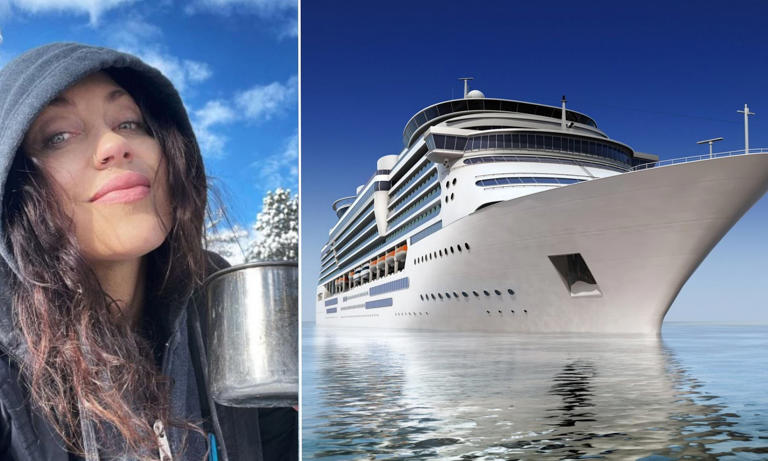

Crying Myself to Sleep on the Biggest Cruise Ship Ever
Seven agonizing nights aboard the Icon of the Seas

Listen to this article
Listen to more stories on curio
Updated at 2:44 p.m. ET on April 6, 2024.
This article was featured in the One Story to Read Today newsletter. Sign up for it here .
MY FIRST GLIMPSE of Royal Caribbean’s Icon of the Seas, from the window of an approaching Miami cab, brings on a feeling of vertigo, nausea, amazement, and distress. I shut my eyes in defense, as my brain tells my optic nerve to try again.
The ship makes no sense, vertically or horizontally. It makes no sense on sea, or on land, or in outer space. It looks like a hodgepodge of domes and minarets, tubes and canopies, like Istanbul had it been designed by idiots. Vibrant, oversignifying colors are stacked upon other such colors, decks perched over still more decks; the only comfort is a row of lifeboats ringing its perimeter. There is no imposed order, no cogent thought, and, for those who do not harbor a totalitarian sense of gigantomania, no visual mercy. This is the biggest cruise ship ever built, and I have been tasked with witnessing its inaugural voyage.
Explore the May 2024 Issue
Check out more from this issue and find your next story to read.
“Author embarks on their first cruise-ship voyage” has been a staple of American essay writing for almost three decades, beginning with David Foster Wallace’s “A Supposedly Fun Thing I’ll Never Do Again,” which was first published in 1996 under the title “Shipping Out.” Since then, many admirable writers have widened and diversified the genre. Usually the essayist commissioned to take to the sea is in their first or second flush of youth and is ready to sharpen their wit against the hull of the offending vessel. I am 51, old and tired, having seen much of the world as a former travel journalist, and mostly what I do in both life and prose is shrug while muttering to my imaginary dachshund, “This too shall pass.” But the Icon of the Seas will not countenance a shrug. The Icon of the Seas is the Linda Loman of cruise ships, exclaiming that attention must be paid. And here I am in late January with my one piece of luggage and useless gray winter jacket and passport, zipping through the Port of Miami en route to the gangway that will separate me from the bulk of North America for more than seven days, ready to pay it in full.
The aforementioned gangway opens up directly onto a thriving mall (I will soon learn it is imperiously called the “Royal Promenade”), presently filled with yapping passengers beneath a ceiling studded with balloons ready to drop. Crew members from every part of the global South, as well as a few Balkans, are shepherding us along while pressing flutes of champagne into our hands. By a humming Starbucks, I drink as many of these as I can and prepare to find my cabin. I show my blue Suite Sky SeaPass Card (more on this later, much more) to a smiling woman from the Philippines, and she tells me to go “aft.” Which is where, now? As someone who has rarely sailed on a vessel grander than the Staten Island Ferry, I am confused. It turns out that the aft is the stern of the ship, or, for those of us who don’t know what a stern or an aft are, its ass. The nose of the ship, responsible for separating the waves before it, is also called a bow, and is marked for passengers as the FWD , or forward. The part of the contemporary sailing vessel where the malls are clustered is called the midship. I trust that you have enjoyed this nautical lesson.
I ascend via elevator to my suite on Deck 11. This is where I encounter my first terrible surprise. My suite windows and balcony do not face the ocean. Instead, they look out onto another shopping mall. This mall is the one that’s called Central Park, perhaps in homage to the Olmsted-designed bit of greenery in the middle of my hometown. Although on land I would be delighted to own a suite with Central Park views, here I am deeply depressed. To sail on a ship and not wake up to a vast blue carpet of ocean? Unthinkable.
Allow me a brief preamble here. The story you are reading was commissioned at a moment when most staterooms on the Icon were sold out. In fact, so enthralled by the prospect of this voyage were hard-core mariners that the ship’s entire inventory of guest rooms (the Icon can accommodate up to 7,600 passengers, but its inaugural journey was reduced to 5,000 or so for a less crowded experience) was almost immediately sold out. Hence, this publication was faced with the shocking prospect of paying nearly $19,000 to procure for this solitary passenger an entire suite—not including drinking expenses—all for the privilege of bringing you this article. But the suite in question doesn’t even have a view of the ocean! I sit down hard on my soft bed. Nineteen thousand dollars for this .

The viewless suite does have its pluses. In addition to all the Malin+Goetz products in my dual bathrooms, I am granted use of a dedicated Suite Deck lounge; access to Coastal Kitchen, a superior restaurant for Suites passengers; complimentary VOOM SM Surf & Stream (“the fastest Internet at Sea”) “for one device per person for the whole cruise duration”; a pair of bathrobes (one of which comes prestained with what looks like a large expectoration by the greenest lizard on Earth); and use of the Grove Suite Sun, an area on Decks 18 and 19 with food and deck chairs reserved exclusively for Suite passengers. I also get reserved seating for a performance of The Wizard of Oz , an ice-skating tribute to the periodic table, and similar provocations. The very color of my Suite Sky SeaPass Card, an oceanic blue as opposed to the cloying royal purple of the standard non-Suite passenger, will soon provoke envy and admiration. But as high as my status may be, there are those on board who have much higher status still, and I will soon learn to bow before them.
In preparation for sailing, I have “priced in,” as they say on Wall Street, the possibility that I may come from a somewhat different monde than many of the other cruisers. Without falling into stereotypes or preconceptions, I prepare myself for a friendly outspokenness on the part of my fellow seafarers that may not comply with modern DEI standards. I believe in meeting people halfway, and so the day before flying down to Miami, I visited what remains of Little Italy to purchase a popular T-shirt that reads DADDY’S LITTLE MEATBALL across the breast in the colors of the Italian flag. My wife recommended that I bring one of my many T-shirts featuring Snoopy and the Peanuts gang, as all Americans love the beagle and his friends. But I naively thought that my meatball T-shirt would be more suitable for conversation-starting. “Oh, and who is your ‘daddy’?” some might ask upon seeing it. “And how long have you been his ‘little meatball’?” And so on.
I put on my meatball T-shirt and head for one of the dining rooms to get a late lunch. In the elevator, I stick out my chest for all to read the funny legend upon it, but soon I realize that despite its burnished tricolor letters, no one takes note. More to the point, no one takes note of me. Despite my attempts at bridge building, the very sight of me (small, ethnic, without a cap bearing the name of a football team) elicits no reaction from other passengers. Most often, they will small-talk over me as if I don’t exist. This brings to mind the travails of David Foster Wallace , who felt so ostracized by his fellow passengers that he retreated to his cabin for much of his voyage. And Wallace was raised primarily in the Midwest and was a much larger, more American-looking meatball than I am. If he couldn’t talk to these people, how will I? What if I leave this ship without making any friends at all, despite my T-shirt? I am a social creature, and the prospect of seven days alone and apart is saddening. Wallace’s stateroom, at least, had a view of the ocean, a kind of cheap eternity.
Worse awaits me in the dining room. This is a large, multichandeliered room where I attended my safety training (I was shown how to put on a flotation vest; it is a very simple procedure). But the maître d’ politely refuses me entry in an English that seems to verge on another language. “I’m sorry, this is only for pendejos ,” he seems to be saying. I push back politely and he repeats himself. Pendejos ? Piranhas? There’s some kind of P-word to which I am not attuned. Meanwhile elderly passengers stream right past, powered by their limbs, walkers, and electric wheelchairs. “It is only pendejo dining today, sir.” “But I have a suite!” I say, already starting to catch on to the ship’s class system. He examines my card again. “But you are not a pendejo ,” he confirms. I am wearing a DADDY’S LITTLE MEATBALL T-shirt, I want to say to him. I am the essence of pendejo .
Eventually, I give up and head to the plebeian buffet on Deck 15, which has an aquatic-styled name I have now forgotten. Before gaining entry to this endless cornucopia of reheated food, one passes a washing station of many sinks and soap dispensers, and perhaps the most intriguing character on the entire ship. He is Mr. Washy Washy—or, according to his name tag, Nielbert of the Philippines—and he is dressed as a taco (on other occasions, I’ll see him dressed as a burger). Mr. Washy Washy performs an eponymous song in spirited, indeed flamboyant English: “Washy, washy, wash your hands, WASHY WASHY!” The dangers of norovirus and COVID on a cruise ship this size (a giant fellow ship was stricken with the former right after my voyage) makes Mr. Washy Washy an essential member of the crew. The problem lies with the food at the end of Washy’s rainbow. The buffet is groaning with what sounds like sophisticated dishes—marinated octopus, boiled egg with anchovy, chorizo, lobster claws—but every animal tastes tragically the same, as if there was only one creature available at the market, a “cruisipus” bred specifically for Royal Caribbean dining. The “vegetables” are no better. I pick up a tomato slice and look right through it. It tastes like cellophane. I sit alone, apart from the couples and parents with gaggles of children, as “We Are Family” echoes across the buffet space.
I may have failed to mention that all this time, the Icon of the Seas has not left port. As the fiery mango of the subtropical setting sun makes Miami’s condo skyline even more apocalyptic, the ship shoves off beneath a perfunctory display of fireworks. After the sun sets, in the far, dark distance, another circus-lit cruise ship ruptures the waves before us. We glance at it with pity, because it is by definition a smaller ship than our own. I am on Deck 15, outside the buffet and overlooking a bunch of pools (the Icon has seven of them), drinking a frilly drink that I got from one of the bars (the Icon has 15 of them), still too shy to speak to anyone, despite Sister Sledge’s assertion that all on the ship are somehow related.
Kim Brooks: On failing the family vacation
The ship’s passage away from Ron DeSantis’s Florida provides no frisson, no sense of developing “sea legs,” as the ship is too large to register the presence of waves unless a mighty wind adds significant chop. It is time for me to register the presence of the 5,000 passengers around me, even if they refuse to register mine. My fellow travelers have prepared for this trip with personally decorated T-shirts celebrating the importance of this voyage. The simplest ones say ICON INAUGURAL ’24 on the back and the family name on the front. Others attest to an over-the-top love of cruise ships: WARNING! MAY START TALKING ABOUT CRUISING . Still others are artisanally designed and celebrate lifetimes spent married while cruising (on ships, of course). A couple possibly in their 90s are wearing shirts whose backs feature a drawing of a cruise liner, two flamingos with ostensibly male and female characteristics, and the legend “ HUSBAND AND WIFE Cruising Partners FOR LIFE WE MAY NOT HAVE IT All Together BUT TOGETHER WE HAVE IT ALL .” (The words not in all caps have been written in cursive.) A real journalist or a more intrepid conversationalist would have gone up to the couple and asked them to explain the longevity of their marriage vis-à-vis their love of cruising. But instead I head to my mall suite, take off my meatball T-shirt, and allow the first tears of the cruise to roll down my cheeks slowly enough that I briefly fall asleep amid the moisture and salt.

I WAKE UP with a hangover. Oh God. Right. I cannot believe all of that happened last night. A name floats into my cobwebbed, nauseated brain: “Ayn Rand.” Jesus Christ.
I breakfast alone at the Coastal Kitchen. The coffee tastes fine and the eggs came out of a bird. The ship rolls slightly this morning; I can feel it in my thighs and my schlong, the parts of me that are most receptive to danger.
I had a dangerous conversation last night. After the sun set and we were at least 50 miles from shore (most modern cruise ships sail at about 23 miles an hour), I lay in bed softly hiccupping, my arms stretched out exactly like Jesus on the cross, the sound of the distant waves missing from my mall-facing suite, replaced by the hum of air-conditioning and children shouting in Spanish through the vents of my two bathrooms. I decided this passivity was unacceptable. As an immigrant, I feel duty-bound to complete the tasks I am paid for, which means reaching out and trying to understand my fellow cruisers. So I put on a normal James Perse T-shirt and headed for one of the bars on the Royal Promenade—the Schooner Bar, it was called, if memory serves correctly.
I sat at the bar for a martini and two Negronis. An old man with thick, hairy forearms drank next to me, very silent and Hemingwaylike, while a dreadlocked piano player tinkled out a series of excellent Elton John covers. To my right, a young white couple—he in floral shorts, she in a light, summery miniskirt with a fearsome diamond ring, neither of them in football regalia—chatted with an elderly couple. Do it , I commanded myself. Open your mouth. Speak! Speak without being spoken to. Initiate. A sentence fragment caught my ear from the young woman, “Cherry Hill.” This is a suburb of Philadelphia in New Jersey, and I had once been there for a reading at a synagogue. “Excuse me,” I said gently to her. “Did you just mention Cherry Hill? It’s a lovely place.”
As it turned out, the couple now lived in Fort Lauderdale (the number of Floridians on the cruise surprised me, given that Southern Florida is itself a kind of cruise ship, albeit one slowly sinking), but soon they were talking with me exclusively—the man potbellied, with a chin like a hard-boiled egg; the woman as svelte as if she were one of the many Ukrainian members of the crew—the elderly couple next to them forgotten. This felt as groundbreaking as the first time I dared to address an American in his native tongue, as a child on a bus in Queens (“On my foot you are standing, Mister”).
“I don’t want to talk politics,” the man said. “But they’re going to eighty-six Biden and put Michelle in.”
I considered the contradictions of his opening conversational gambit, but decided to play along. “People like Michelle,” I said, testing the waters. The husband sneered, but the wife charitably put forward that the former first lady was “more personable” than Joe Biden. “They’re gonna eighty-six Biden,” the husband repeated. “He can’t put a sentence together.”
After I mentioned that I was a writer—though I presented myself as a writer of teleplays instead of novels and articles such as this one—the husband told me his favorite writer was Ayn Rand. “Ayn Rand, she came here with nothing,” the husband said. “I work with a lot of Cubans, so …” I wondered if I should mention what I usually do to ingratiate myself with Republicans or libertarians: the fact that my finances improved after pass-through corporations were taxed differently under Donald Trump. Instead, I ordered another drink and the couple did the same, and I told him that Rand and I were born in the same city, St. Petersburg/Leningrad, and that my family also came here with nothing. Now the bonding and drinking began in earnest, and several more rounds appeared. Until it all fell apart.
Read: Gary Shteyngart on watching Russian television for five days straight
My new friend, whom I will refer to as Ayn, called out to a buddy of his across the bar, and suddenly a young couple, both covered in tattoos, appeared next to us. “He fucking punked me,” Ayn’s frat-boy-like friend called out as he put his arm around Ayn, while his sizable partner sizzled up to Mrs. Rand. Both of them had a look I have never seen on land—their eyes projecting absence and enmity in equal measure. In the ’90s, I drank with Russian soldiers fresh from Chechnya and wandered the streets of wartime Zagreb, but I have never seen such undisguised hostility toward both me and perhaps the universe at large. I was briefly introduced to this psychopathic pair, but neither of them wanted to have anything to do with me, and the tattooed woman would not even reveal her Christian name to me (she pretended to have the same first name as Mrs. Rand). To impress his tattooed friends, Ayn made fun of the fact that as a television writer, I’d worked on the series Succession (which, it would turn out, practically nobody on the ship had watched), instead of the far more palatable, in his eyes, zombie drama of last year. And then my new friends drifted away from me into an angry private conversation—“He punked me!”—as I ordered another drink for myself, scared of the dead-eyed arrivals whose gaze never registered in the dim wattage of the Schooner Bar, whose terrifying voices and hollow laughs grated like unoiled gears against the crooning of “Goodbye Yellow Brick Road.”
But today is a new day for me and my hangover. After breakfast, I explore the ship’s so-called neighborhoods . There’s the AquaDome, where one can find a food hall and an acrobatic sound-and-light aquatic show. Central Park has a premium steak house, a sushi joint, and a used Rolex that can be bought for $8,000 on land here proudly offered at $17,000. There’s the aforementioned Royal Promenade, where I had drunk with the Rands, and where a pair of dueling pianos duel well into the night. There’s Surfside, a kids’ neighborhood full of sugary garbage, which looks out onto the frothy trail that the behemoth leaves behind itself. Thrill Island refers to the collection of tubes that clutter the ass of the ship and offer passengers six waterslides and a surfing simulation. There’s the Hideaway, an adult zone that plays music from a vomit-slathered, Brit-filled Alicante nightclub circa 1996 and proves a big favorite with groups of young Latin American customers. And, most hurtfully, there’s the Suite Neighborhood.

I say hurtfully because as a Suite passenger I should be here, though my particular suite is far from the others. Whereas I am stuck amid the riffraff of Deck 11, this section is on the highborn Decks 16 and 17, and in passing, I peek into the spacious, tall-ceilinged staterooms from the hallway, dazzled by the glint of the waves and sun. For $75,000, one multifloor suite even comes with its own slide between floors, so that a family may enjoy this particular terror in private. There is a quiet splendor to the Suite Neighborhood. I see fewer stickers and signs and drawings than in my own neighborhood—for example, MIKE AND DIANA PROUDLY SERVED U.S. MARINE CORPS RETIRED . No one here needs to announce their branch of service or rank; they are simply Suites, and this is where they belong. Once again, despite my hard work and perseverance, I have been disallowed from the true American elite. Once again, I am “Not our class, dear.” I am reminded of watching The Love Boat on my grandmother’s Zenith, which either was given to her or we found in the trash (I get our many malfunctioning Zeniths confused) and whose tube got so hot, I would put little chunks of government cheese on a thin tissue atop it to give our welfare treat a pleasant, Reagan-era gooeyness. I could not understand English well enough then to catch the nuances of that seafaring program, but I knew that there were differences in the status of the passengers, and that sometimes those differences made them sad. Still, this ship, this plenty—every few steps, there are complimentary nachos or milkshakes or gyros on offer—was the fatty fuel of my childhood dreams. If only I had remained a child.
I walk around the outdoor decks looking for company. There is a middle-aged African American couple who always seem to be asleep in each other’s arms, probably exhausted from the late capitalism they regularly encounter on land. There is far more diversity on this ship than I expected. Many couples are a testament to Loving v. Virginia , and there is a large group of folks whose T-shirts read MELANIN AT SEA / IT’S THE MELANIN FOR ME . I smile when I see them, but then some young kids from the group makes Mr. Washy Washy do a cruel, caricatured “Burger Dance” (today he is in his burger getup), and I think, Well, so much for intersectionality .
At the infinity pool on Deck 17, I spot some elderly women who could be ethnic and from my part of the world, and so I jump in. I am proved correct! Many of them seem to be originally from Queens (“Corona was still great when it was all Italian”), though they are now spread across the tristate area. We bond over the way “Ron-kon-koma” sounds when announced in Penn Station.
“Everyone is here for a different reason,” one of them tells me. She and her ex-husband last sailed together four years ago to prove to themselves that their marriage was truly over. Her 15-year-old son lost his virginity to “an Irish young lady” while their ship was moored in Ravenna, Italy. The gaggle of old-timers competes to tell me their favorite cruising stories and tips. “A guy proposed in Central Park a couple of years ago”—many Royal Caribbean ships apparently have this ridiculous communal area—“and she ran away screaming!” “If you’re diamond-class, you get four drinks for free.” “A different kind of passenger sails out of Bayonne.” (This, perhaps, is racially coded.) “Sometimes, if you tip the bartender $5, your next drink will be free.”
“Everyone’s here for a different reason,” the woman whose marriage ended on a cruise tells me again. “Some people are here for bad reasons—the drinkers and the gamblers. Some people are here for medical reasons.” I have seen more than a few oxygen tanks and at least one woman clearly undergoing very serious chemo. Some T-shirts celebrate good news about a cancer diagnosis. This might be someone’s last cruise or week on Earth. For these women, who have spent months, if not years, at sea, cruising is a ritual as well as a life cycle: first love, last love, marriage, divorce, death.
Read: The last place on Earth any tourist should go
I have talked with these women for so long, tonight I promise myself that after a sad solitary dinner I will not try to seek out company at the bars in the mall or the adult-themed Hideaway. I have enough material to fulfill my duties to this publication. As I approach my orphaned suite, I run into the aggro young people who stole Mr. and Mrs. Rand away from me the night before. The tattooed apparitions pass me without a glance. She is singing something violent about “Stuttering Stanley” (a character in a popular horror movie, as I discover with my complimentary VOOM SM Surf & Stream Internet at Sea) and he’s loudly shouting about “all the money I’ve lost,” presumably at the casino in the bowels of the ship.
So these bent psychos out of a Cormac McCarthy novel are angrily inhabiting my deck. As I mewl myself to sleep, I envision a limited series for HBO or some other streamer, a kind of low-rent White Lotus , where several aggressive couples conspire to throw a shy intellectual interloper overboard. I type the scenario into my phone. As I fall asleep, I think of what the woman who recently divorced her husband and whose son became a man through the good offices of the Irish Republic told me while I was hoisting myself out of the infinity pool. “I’m here because I’m an explorer. I’m here because I’m trying something new.” What if I allowed myself to believe in her fantasy?

“YOU REALLY STARTED AT THE TOP,” they tell me. I’m at the Coastal Kitchen for my eggs and corned-beef hash, and the maître d’ has slotted me in between two couples. Fueled by coffee or perhaps intrigued by my relative youth, they strike up a conversation with me. As always, people are shocked that this is my first cruise. They contrast the Icon favorably with all the preceding liners in the Royal Caribbean fleet, usually commenting on the efficiency of the elevators that hurl us from deck to deck (as in many large corporate buildings, the elevators ask you to choose a floor and then direct you to one of many lifts). The couple to my right, from Palo Alto—he refers to his “porn mustache” and calls his wife “my cougar” because she is two years older—tell me they are “Pandemic Pinnacles.”
This is the day that my eyes will be opened. Pinnacles , it is explained to me over translucent cantaloupe, have sailed with Royal Caribbean for 700 ungodly nights. Pandemic Pinnacles took advantage of the two-for-one accrual rate of Pinnacle points during the pandemic, when sailing on a cruise ship was even more ill-advised, to catapult themselves into Pinnacle status.
Because of the importance of the inaugural voyage of the world’s largest cruise liner, more than 200 Pinnacles are on this ship, a startling number, it seems. Mrs. Palo Alto takes out a golden badge that I have seen affixed over many a breast, which reads CROWN AND ANCHOR SOCIETY along with her name. This is the coveted badge of the Pinnacle. “You should hear all the whining in Guest Services,” her husband tells me. Apparently, the Pinnacles who are not also Suites like us are all trying to use their status to get into Coastal Kitchen, our elite restaurant. Even a Pinnacle needs to be a Suite to access this level of corned-beef hash.
“We’re just baby Pinnacles,” Mrs. Palo Alto tells me, describing a kind of internal class struggle among the Pinnacle elite for ever higher status.
And now I understand what the maître d’ was saying to me on the first day of my cruise. He wasn’t saying “ pendejo .” He was saying “Pinnacle.” The dining room was for Pinnacles only, all those older people rolling in like the tide on their motorized scooters.
And now I understand something else: This whole thing is a cult. And like most cults, it can’t help but mirror the endless American fight for status. Like Keith Raniere’s NXIVM, where different-colored sashes were given out to connote rank among Raniere’s branded acolytes, this is an endless competition among Pinnacles, Suites, Diamond-Plusers, and facing-the-mall, no-balcony purple SeaPass Card peasants, not to mention the many distinctions within each category. The more you cruise, the higher your status. No wonder a section of the Royal Promenade is devoted to getting passengers to book their next cruise during the one they should be enjoying now. No wonder desperate Royal Caribbean offers (“FINAL HOURS”) crowded my email account weeks before I set sail. No wonder the ship’s jewelry store, the Royal Bling, is selling a $100,000 golden chalice that will entitle its owner to drink free on Royal Caribbean cruises for life. (One passenger was already gaming out whether her 28-year-old son was young enough to “just about earn out” on the chalice or if that ship had sailed.) No wonder this ship was sold out months before departure , and we had to pay $19,000 for a horrid suite away from the Suite Neighborhood. No wonder the most mythical hero of Royal Caribbean lore is someone named Super Mario, who has cruised so often, he now has his own working desk on many ships. This whole experience is part cult, part nautical pyramid scheme.
From the June 2014 issue: Ship of wonks
“The toilets are amazing,” the Palo Altos are telling me. “One flush and you’re done.” “They don’t understand how energy-efficient these ships are,” the husband of the other couple is telling me. “They got the LNG”—liquefied natural gas, which is supposed to make the Icon a boon to the environment (a concept widely disputed and sometimes ridiculed by environmentalists).
But I’m thinking along a different line of attack as I spear my last pallid slice of melon. For my streaming limited series, a Pinnacle would have to get killed by either an outright peasant or a Suite without an ocean view. I tell my breakfast companions my idea.
“Oh, for sure a Pinnacle would have to be killed,” Mr. Palo Alto, the Pandemic Pinnacle, says, touching his porn mustache thoughtfully as his wife nods.
“THAT’S RIGHT, IT’S your time, buddy!” Hubert, my fun-loving Panamanian cabin attendant, shouts as I step out of my suite in a robe. “Take it easy, buddy!”
I have come up with a new dressing strategy. Instead of trying to impress with my choice of T-shirts, I have decided to start wearing a robe, as one does at a resort property on land, with a proper spa and hammam. The response among my fellow cruisers has been ecstatic. “Look at you in the robe!” Mr. Rand cries out as we pass each other by the Thrill Island aqua park. “You’re living the cruise life! You know, you really drank me under the table that night.” I laugh as we part ways, but my soul cries out, Please spend more time with me, Mr. and Mrs. Rand; I so need the company .
In my white robe, I am a stately presence, a refugee from a better limited series, a one-man crossover episode. (Only Suites are granted these robes to begin with.) Today, I will try many of the activities these ships have on offer to provide their clientele with a sense of never-ceasing motion. Because I am already at Thrill Island, I decide to climb the staircase to what looks like a mast on an old-fashioned ship (terrified, because I am afraid of heights) to try a ride called “Storm Chasers,” which is part of the “Category 6” water park, named in honor of one of the storms that may someday do away with the Port of Miami entirely. Storm Chasers consists of falling from the “mast” down a long, twisting neon tube filled with water, like being the camera inside your own colonoscopy, as you hold on to the handles of a mat, hoping not to die. The tube then flops you down headfirst into a trough of water, a Royal Caribbean baptism. It both knocks my breath out and makes me sad.
In keeping with the aquatic theme, I attend a show at the AquaDome. To the sound of “Live and Let Die,” a man in a harness gyrates to and fro in the sultry air. I saw something very similar in the back rooms of the famed Berghain club in early-aughts Berlin. Soon another harnessed man is gyrating next to the first. Ja , I think to myself, I know how this ends. Now will come the fisting , natürlich . But the show soon devolves into the usual Marvel-film-grade nonsense, with too much light and sound signifying nichts . If any fisting is happening, it is probably in the Suite Neighborhood, inside a cabin marked with an upside-down pineapple, which I understand means a couple are ready to swing, and I will see none of it.
I go to the ice show, which is a kind of homage—if that’s possible—to the periodic table, done with the style and pomp and masterful precision that would please the likes of Kim Jong Un, if only he could afford Royal Caribbean talent. At one point, the dancers skate to the theme song of Succession . “See that!” I want to say to my fellow Suites—at “cultural” events, we have a special section reserved for us away from the commoners—“ Succession ! It’s even better than the zombie show! Open your minds!”
Finally, I visit a comedy revue in an enormous and too brightly lit version of an “intimate,” per Royal Caribbean literature, “Manhattan comedy club.” Many of the jokes are about the cruising life. “I’ve lived on ships for 20 years,” one of the middle-aged comedians says. “I can only see so many Filipino homosexuals dressed as a taco.” He pauses while the audience laughs. “I am so fired tonight,” he says. He segues into a Trump impression and then Biden falling asleep at the microphone, which gets the most laughs. “Anyone here from Fort Leonard Wood?” another comedian asks. Half the crowd seems to cheer. As I fall asleep that night, I realize another connection I have failed to make, and one that may explain some of the diversity on this vessel—many of its passengers have served in the military.
As a coddled passenger with a suite, I feel like I am starting to understand what it means to have a rank and be constantly reminded of it. There are many espresso makers , I think as I look across the expanse of my officer-grade quarters before closing my eyes, but this one is mine .

A shocking sight greets me beyond the pools of Deck 17 as I saunter over to the Coastal Kitchen for my morning intake of slightly sour Americanos. A tiny city beneath a series of perfectly pressed green mountains. Land! We have docked for a brief respite in Basseterre, the capital of St. Kitts and Nevis. I wolf down my egg scramble to be one of the first passengers off the ship. Once past the gangway, I barely refrain from kissing the ground. I rush into the sights and sounds of this scruffy island city, sampling incredible conch curry and buckets of non-Starbucks coffee. How wonderful it is to be where God intended humans to be: on land. After all, I am neither a fish nor a mall rat. This is my natural environment. Basseterre may not be Havana, but there are signs of human ingenuity and desire everywhere you look. The Black Table Grill Has been Relocated to Soho Village, Market Street, Directly Behind of, Gary’s Fruits and Flower Shop. Signed. THE PORK MAN reads a sign stuck to a wall. Now, that is how you write a sign. A real sign, not the come-ons for overpriced Rolexes that blink across the screens of the Royal Promenade.
“Hey, tie your shoestring!” a pair of laughing ladies shout to me across the street.
“Thank you!” I shout back. Shoestring! “Thank you very much.”
A man in Independence Square Park comes by and asks if I want to play with his monkey. I haven’t heard that pickup line since the Penn Station of the 1980s. But then he pulls a real monkey out of a bag. The monkey is wearing a diaper and looks insane. Wonderful , I think, just wonderful! There is so much life here. I email my editor asking if I can remain on St. Kitts and allow the Icon to sail off into the horizon without me. I have even priced a flight home at less than $300, and I have enough material from the first four days on the cruise to write the entire story. “It would be funny …” my editor replies. “Now get on the boat.”
As I slink back to the ship after my brief jailbreak, the locals stand under umbrellas to gaze at and photograph the boat that towers over their small capital city. The limousines of the prime minister and his lackeys are parked beside the gangway. St. Kitts, I’ve been told, is one of the few islands that would allow a ship of this size to dock.
“We hear about all the waterslides,” a sweet young server in one of the cafés told me. “We wish we could go on the ship, but we have to work.”
“I want to stay on your island,” I replied. “I love it here.”
But she didn’t understand how I could possibly mean that.
“WASHY, WASHY, so you don’t get stinky, stinky!” kids are singing outside the AquaDome, while their adult minders look on in disapproval, perhaps worried that Mr. Washy Washy is grooming them into a life of gayness. I heard a southern couple skip the buffet entirely out of fear of Mr. Washy Washy.
Meanwhile, I have found a new watering hole for myself, the Swim & Tonic, the biggest swim-up bar on any cruise ship in the world. Drinking next to full-size, nearly naked Americans takes away one’s own self-consciousness. The men have curvaceous mom bodies. The women are equally un-shy about their sprawling physiques.
Today I’ve befriended a bald man with many children who tells me that all of the little trinkets that Royal Caribbean has left us in our staterooms and suites are worth a fortune on eBay. “Eighty dollars for the water bottle, 60 for the lanyard,” the man says. “This is a cult.”
“Tell me about it,” I say. There is, however, a clientele for whom this cruise makes perfect sense. For a large middle-class family (he works in “supply chains”), seven days in a lower-tier cabin—which starts at $1,800 a person—allow the parents to drop off their children in Surfside, where I imagine many young Filipina crew members will take care of them, while the parents are free to get drunk at a swim-up bar and maybe even get intimate in their cabin. Cruise ships have become, for a certain kind of hardworking family, a form of subsidized child care.
There is another man I would like to befriend at the Swim & Tonic, a tall, bald fellow who is perpetually inebriated and who wears a necklace studded with little rubber duckies in sunglasses, which, I am told, is a sort of secret handshake for cruise aficionados. Tomorrow, I will spend more time with him, but first the ship docks at St. Thomas, in the U.S. Virgin Islands. Charlotte Amalie, the capital, is more charming in name than in presence, but I still all but jump off the ship to score a juicy oxtail and plantains at the well-known Petite Pump Room, overlooking the harbor. From one of the highest points in the small city, the Icon of the Seas appears bigger than the surrounding hills.
I usually tan very evenly, but something about the discombobulation of life at sea makes me forget the regular application of sunscreen. As I walk down the streets of Charlotte Amalie in my fluorescent Icon of the Seas cap, an old Rastafarian stares me down. “Redneck,” he hisses.
“No,” I want to tell him, as I bring a hand up to my red neck, “that’s not who I am at all. On my island, Mannahatta, as Whitman would have it, I am an interesting person living within an engaging artistic milieu. I do not wish to use the Caribbean as a dumping ground for the cruise-ship industry. I love the work of Derek Walcott. You don’t understand. I am not a redneck. And if I am, they did this to me.” They meaning Royal Caribbean? Its passengers? The Rands?
“They did this to me!”
Back on the Icon, some older matrons are muttering about a run-in with passengers from the Celebrity cruise ship docked next to us, the Celebrity Apex. Although Celebrity Cruises is also owned by Royal Caribbean, I am made to understand that there is a deep fratricidal beef between passengers of the two lines. “We met a woman from the Apex,” one matron says, “and she says it was a small ship and there was nothing to do. Her face was as tight as a 19-year-old’s, she had so much surgery.” With those words, and beneath a cloudy sky, humidity shrouding our weathered faces and red necks, we set sail once again, hopefully in the direction of home.

THERE ARE BARELY 48 HOURS LEFT to the cruise, and the Icon of the Seas’ passengers are salty. They know how to work the elevators. They know the Washy Washy song by heart. They understand that the chicken gyro at “Feta Mediterranean,” in the AquaDome Market, is the least problematic form of chicken on the ship.
The passengers have shed their INAUGURAL CRUISE T-shirts and are now starting to evince political opinions. There are caps pledging to make America great again and T-shirts that celebrate words sometimes attributed to Patrick Henry: “The Constitution is not an instrument for the government to restrain the people; it is an instrument for the people to restrain the government.” With their preponderance of FAMILY FLAG FAITH FRIENDS FIREARMS T-shirts, the tables by the crepe station sometimes resemble the Capitol Rotunda on January 6. The Real Anthony Fauci , by Robert F. Kennedy Jr., appears to be a popular form of literature, especially among young men with very complicated versions of the American flag on their T-shirts. Other opinions blend the personal and the political. “Someone needs to kill Washy guy, right?” a well-dressed man in the elevator tells me, his gray eyes radiating nothing. “Just beat him to death. Am I right?” I overhear the male member of a young couple whisper, “There goes that freak” as I saunter by in my white spa robe, and I decide to retire it for the rest of the cruise.
I visit the Royal Bling to see up close the $100,000 golden chalice that entitles you to free drinks on Royal Caribbean forever. The pleasant Serbian saleslady explains that the chalice is actually gold-plated and covered in white zirconia instead of diamonds, as it would otherwise cost $1 million. “If you already have everything,” she explains, “this is one more thing you can get.”
I believe that anyone who works for Royal Caribbean should be entitled to immediate American citizenship. They already speak English better than most of the passengers and, per the Serbian lady’s sales pitch above, better understand what America is as well. Crew members like my Panamanian cabin attendant seem to work 24 hours a day. A waiter from New Delhi tells me that his contract is six months and three weeks long. After a cruise ends, he says, “in a few hours, we start again for the next cruise.” At the end of the half a year at sea, he is allowed a two-to-three-month stay at home with his family. As of 2019, the median income for crew members was somewhere in the vicinity of $20,000, according to a major business publication. Royal Caribbean would not share the current median salary for its crew members, but I am certain that it amounts to a fraction of the cost of a Royal Bling gold-plated, zirconia-studded chalice.
And because most of the Icon’s hyper-sanitized spaces are just a frittata away from being a Delta lounge, one forgets that there are actual sailors on this ship, charged with the herculean task of docking it in port. “Having driven 100,000-ton aircraft carriers throughout my career,” retired Admiral James G. Stavridis, the former NATO Supreme Allied Commander Europe, writes to me, “I’m not sure I would even know where to begin with trying to control a sea monster like this one nearly three times the size.” (I first met Stavridis while touring Army bases in Germany more than a decade ago.)
Today, I decide to head to the hot tub near Swim & Tonic, where some of the ship’s drunkest reprobates seem to gather (the other tubs are filled with families and couples). The talk here, like everywhere else on the ship, concerns football, a sport about which I know nothing. It is apparent that four teams have recently competed in some kind of finals for the year, and that two of them will now face off in the championship. Often when people on the Icon speak, I will try to repeat the last thing they said with a laugh or a nod of disbelief. “Yes, 20-yard line! Ha!” “Oh my God, of course, scrimmage.”
Soon we are joined in the hot tub by the late-middle-age drunk guy with the duck necklace. He is wearing a bucket hat with the legend HAWKEYES , which, I soon gather, is yet another football team. “All right, who turned me in?” Duck Necklace says as he plops into the tub beside us. “I get a call in the morning,” he says. “It’s security. Can you come down to the dining room by 10 a.m.? You need to stay away from the members of this religious family.” Apparently, the gregarious Duck Necklace had photobombed the wrong people. There are several families who present as evangelical Christians or practicing Muslims on the ship. One man, evidently, was not happy that Duck Necklace had made contact with his relatives. “It’s because of religious stuff; he was offended. I put my arm around 20 people a day.”
Everyone laughs. “They asked me three times if I needed medication,” he says of the security people who apparently interrogated him in full view of others having breakfast.
Another hot-tub denizen suggests that he should have asked for fentanyl. After a few more drinks, Duck Necklace begins to muse about what it would be like to fall off the ship. “I’m 62 and I’m ready to go,” he says. “I just don’t want a shark to eat me. I’m a huge God guy. I’m a Bible guy. There’s some Mayan theory squaring science stuff with religion. There is so much more to life on Earth.” We all nod into our Red Stripes.
“I never get off the ship when we dock,” he says. He tells us he lost $6,000 in the casino the other day. Later, I look him up, and it appears that on land, he’s a financial adviser in a crisp gray suit, probably a pillar of his North Chicago community.

THE OCEAN IS TEEMING with fascinating life, but on the surface it has little to teach us. The waves come and go. The horizon remains ever far away.
I am constantly told by my fellow passengers that “everybody here has a story.” Yes, I want to reply, but everybody everywhere has a story. You, the reader of this essay, have a story, and yet you’re not inclined to jump on a cruise ship and, like Duck Necklace, tell your story to others at great pitch and volume. Maybe what they’re saying is that everybody on this ship wants to have a bigger, more coherent, more interesting story than the one they’ve been given. Maybe that’s why there’s so much signage on the doors around me attesting to marriages spent on the sea. Maybe that’s why the Royal Caribbean newsletter slipped under my door tells me that “this isn’t a vacation day spent—it’s bragging rights earned.” Maybe that’s why I’m so lonely.
Today is a big day for Icon passengers. Today the ship docks at Royal Caribbean’s own Bahamian island, the Perfect Day at CocoCay. (This appears to be the actual name of the island.) A comedian at the nightclub opined on what his perfect day at CocoCay would look like—receiving oral sex while learning that his ex-wife had been killed in a car crash (big laughter). But the reality of the island is far less humorous than that.
One of the ethnic tristate ladies in the infinity pool told me that she loved CocoCay because it had exactly the same things that could be found on the ship itself. This proves to be correct. It is like the Icon, but with sand. The same tired burgers, the same colorful tubes conveying children and water from Point A to B. The same swim-up bar at its Hideaway ($140 for admittance, no children allowed; Royal Caribbean must be printing money off its clientele). “There was almost a fight at The Wizard of Oz ,” I overhear an elderly woman tell her companion on a chaise lounge. Apparently one of the passengers began recording Royal Caribbean’s intellectual property and “three guys came after him.”
I walk down a pathway to the center of the island, where a sign reads DO NOT ENTER: YOU HAVE REACHED THE BOUNDARY OF ADVENTURE . I hear an animal scampering in the bushes. A Royal Caribbean worker in an enormous golf cart soon chases me down and takes me back to the Hideaway, where I run into Mrs. Rand in a bikini. She becomes livid telling me about an altercation she had the other day with a woman over a towel and a deck chair. We Suites have special towel privileges; we do not have to hand over our SeaPass Card to score a towel. But the Rands are not Suites. “People are so entitled here,” Mrs. Rand says. “It’s like the airport with all its classes.” “You see,” I want to say, “this is where your husband’s love of Ayn Rand runs into the cruelties and arbitrary indignities of unbridled capitalism.” Instead we make plans to meet for a final drink in the Schooner Bar tonight (the Rands will stand me up).
Back on the ship, I try to do laps, but the pool (the largest on any cruise ship, naturally) is fully trashed with the detritus of American life: candy wrappers, a slowly dissolving tortilla chip, napkins. I take an extra-long shower in my suite, then walk around the perimeter of the ship on a kind of exercise track, past all the alluring lifeboats in their yellow-and-white livery. Maybe there is a dystopian angle to the HBO series that I will surely end up pitching, one with shades of WALL-E or Snowpiercer . In a collapsed world, a Royal Caribbean–like cruise liner sails from port to port, collecting new shipmates and supplies in exchange for the precious energy it has on board. (The actual Icon features a new technology that converts passengers’ poop into enough energy to power the waterslides . In the series, this shitty technology would be greatly expanded.) A very young woman (18? 19?), smart and lonely, who has only known life on the ship, walks along the same track as I do now, contemplating jumping off into the surf left by its wake. I picture reusing Duck Necklace’s words in the opening shot of the pilot. The girl is walking around the track, her eyes on the horizon; maybe she’s highborn—a Suite—and we hear the voice-over: “I’m 19 and I’m ready to go. I just don’t want a shark to eat me.”
Before the cruise is finished, I talk to Mr. Washy Washy, or Nielbert of the Philippines. He is a sweet, gentle man, and I thank him for the earworm of a song he has given me and for keeping us safe from the dreaded norovirus. “This is very important to me, getting people to wash their hands,” he tells me in his burger getup. He has dreams, as an artist and a performer, but they are limited in scope. One day he wants to dress up as a piece of bacon for the morning shift.
THE MAIDEN VOYAGE OF THE TITANIC (the Icon of the Seas is five times as large as that doomed vessel) at least offered its passengers an exciting ending to their cruise, but when I wake up on the eighth day, all I see are the gray ghosts that populate Miami’s condo skyline. Throughout my voyage, my writer friends wrote in to commiserate with me. Sloane Crosley, who once covered a three-day spa mini-cruise for Vogue , tells me she felt “so very alone … I found it very untethering.” Gideon Lewis-Kraus writes in an Instagram comment: “When Gary is done I think it’s time this genre was taken out back and shot.” And he is right. To badly paraphrase Adorno: After this, no more cruise stories. It is unfair to put a thinking person on a cruise ship. Writers typically have difficult childhoods, and it is cruel to remind them of the inherent loneliness that drove them to writing in the first place. It is also unseemly to write about the kind of people who go on cruises. Our country does not provide the education and upbringing that allow its citizens an interior life. For the creative class to point fingers at the large, breasty gentlemen adrift in tortilla-chip-laden pools of water is to gather a sour harvest of low-hanging fruit.
A day or two before I got off the ship, I decided to make use of my balcony, which I had avoided because I thought the view would only depress me further. What I found shocked me. My suite did not look out on Central Park after all. This entire time, I had been living in the ship’s Disneyland, Surfside, the neighborhood full of screaming toddlers consuming milkshakes and candy. And as I leaned out over my balcony, I beheld a slight vista of the sea and surf that I thought I had been missing. It had been there all along. The sea was frothy and infinite and blue-green beneath the span of a seagull’s wing. And though it had been trod hard by the world’s largest cruise ship, it remained.
This article appears in the May 2024 print edition with the headline “A Meatball at Sea.” When you buy a book using a link on this page, we receive a commission. Thank you for supporting The Atlantic.

IMAGES
VIDEO
COMMENTS
Cruise ship overboard systems aim to cut down on response time and notify the crew when someone goes overboard. Not all cruise ships have the systems yet, but some have installed them. Passengers ...
The majority of cruise ships do not have specific man-overboard sensors, but they are becoming more common. 30 cruise ships owned by Carnival and Disney have been fitted with V-MOB sensors used to automatically alert the bridge of a man overboard incident. The Cruise Vessel Security and Safety Act of 2010 requires that passenger vessels ...
The Man Overboard Detection System has undergone real-world testing on board superliner-class cruise ships using industry-developed guidelines along established cold water and warm water cruise routes. The system is affordable and testing demonstrated positive results including minimal false alarms, and very high detection rates.
6 cruise passengers have gone overboard in 3 months. Here's why most ships still don't use detection tech for rescues. Hannah Towey. Aug 31, 2023, 7:45 AM PDT. Vague language in a 2010 law means ...
High accuracy detection with 95% probability. MOBtronic is an automated man-overboard system for the instant detection, classification and rescue support of a human falling overboard a vessel or maritime structure. Each MOBtronic unit is self contained and includes micro radars, thermal cameras with video analytics and automatic data processing.
conditions and cruise operations, can minimize the effectiveness of detection systems. The Man Overboard Detection System has undergone real-world testing on board superliner-class cruise ships using industry-developed guidelines along established cold water and warm water cruise routes. The system is affordable and testing demonstrated ...
An average of 21 man overboard incidents occur on cruise ships every year. Up until now, there have been no internationally agreed requirements to evaluate the effectiveness of man overboard detection systems, but new international ISO guidelines set out clear specifications for such technologies. Elliot Gardner finds out what this means for manufacturers and operators.
At present, 90% of cruise lines do not employ an MOB alarm system designed to sound on the bridge or at other centralised security station when it detects a person overboard. The system uses thermal cameras mounted on the hull and other parts of a ship to detect body heat. The images are then fed through on-board computers that use algorithms ...
April 14, 2023. false. SICK is introducing MRS6000 sensors for a man overboard detection system, designed to help detect and rescue a missing person from a ship, according to a press release. SICK provides sensors that can be installed on a detection system that help locate the exact position of the missing person quickly, which is crucial for ...
Cruise Ship Overboard Detection with Lidar. Jul 12, 2017 | By Velodyne Lidar. In March 2017, the U.S. Coast Guard suspended a search for Brandon Paul, a 23-year-old Florida man who fell overboard from a cruise ship in waters north of Cuba. The search lasted 16 hours and covered 3,469 square miles, yet it failed to find the latest victim in a ...
Have you ever wondered how ships manage to avoid collisions at sea? In this video, we explore the International Regulations for Preventing Collisions at Sea ...
The Cruise Vessel Security and Safety Act of 2010 mandates that all cruise ships operating in US waters carry equipment that can detect or capture imagery of people who have gone overboard. The resulting ISO standards are strict: Systems must achieve a 95 percent probability of detection while recording no more than one false alarm per day, on ...
October 10, 2017. MSC Cruises today announced the launch of a new video surveillance system aboard its ships, developed in conjunction with Bosch and Hewlett Packard Enterprise. The integrated system is part of a plan to further optimize man overboard detection, the company said. After a successful pilot phase of extensive stress-testing and ...
MSC Cruises has added an industry first man overboard detection to one of their cruise ships and will eventually be rolled out to every cruise ship in their fleet. The video surveillance system ...
MSC Launches New Man Overboard Detection Technology. October 13, 2017 , Accidents. MSC Cruises announced the launch of an innovative vanguard video surveillance system which offers even greater onboard security. In another cruise-industry-first, MSC developed the highly-sophisticated advanced system via collaboration with Bosch and Hewlett ...
The Man Overboard Detection System has undergone real-world testing on board superliner-class cruise ships using industry-developed guidelines along established cold water and warm water cruise routes. The system is affordable and testing demonstrated positive results including minimal false alarms, and very high detection rates.
MSC Cruises has just announced the launch of a new intelligent video surveillance system and innovative man overboard detection technology. This industry-first that MSC has developed in collaboration with global leaders in security technology, Bosch and Hewlett Packard Enterprise, was developed to further optimize security aspects for all guests and crew onboard. It is part of […]
Over 27 million holidaymakers are expected to go on a cruising holiday this year 1), as the industry booms with more ships, destinations and themes riding the wave.The safety of these ships is rarely put into question, yet an average of 21 "man overboard" incidents occur every year 2), fuelling an industry that develops detection systems to raise the alarm and locate the victim as soon as ...
MARSS announced today via Seatrade Cruse News that it secured a contract for the installation of MOBtronic, its advanced man overboard detection and tracking system onboard a new cruise ship due for operation later this year. "The contract includes the installation of a network of MOBtronic marinised pods that are strategically positioned to cover the volume around the entire vessel ...
What are cruise ship overboard detection systems? The Cruise Vessel Security and Safety Act of 2010 requires passenger vessels operating in the United States to "integrate technology that can be used for capturing images of passengers or detecting passengers who have fallen overboard, to the extent that such technology is available." ...
Modified Date: Oct 10, 2017. Photo By: MSC Cruises. MSC Cruises has launched an industry first man overboard detection system will roll out across the fleet over time. MSC Cruises is now leading ...
Getty. Out of the nearly 2.5 million people who cruise over the course of a month, one or two people go overboard. Per a report on operational incidents by the Cruise Lines International Association, there were 212 man overboard incidents on cruise ships between 2009-2019, which comes out to around 19 overboards a year.
Mary Bond| Aug 23, 2019. MARSS secured a contract for the installation of MOBtronic, its advanced man overboard detection and tracking system onboard a new cruise ship due for operation later this year. The contract includes the installation of a network of MOBtronic marinised pods that are strategically positioned to cover the volume around ...
The 155,889-gross-ton, Freedom-class cruise ship was 57 miles from Great Inagua Island in The Bahamas at the time and crew members immediately initiated search operations and alerted the US Coast ...
The buck stops with the Captain at all times while on board which is a fantastic system when it works, and it typically does. ... goes overboard but on a cruise ship it can be especially ...
A twenty-year old man cruising with his family went overboard late last night as the Royal Caribbean Liberty of the Seas was returning to Port Everglades following a four day cruise to the Amber Cover cruise port in the Dominican Republic.. The Miami Herald reported that the passenger went overboard "about 57 miles off Great Inagua, the southernmost island of the Bahamas, located near the ...
Father of 20yo who went overboard cruise ship believes he's still alive ... "Such automatic MOB systems utilise state-of-the-art motion detection, video and infra-red technology and radar to ...
Survival expert reveals what to do if you fall OVERBOARD on a cruise ship - sharing life-saving tips for passengers in the wake of Royal Caribbean tragedy that saw 20-year-old Levion Parker jump ...
This is the biggest cruise ship ever built, and I have been tasked with witnessing its inaugural voyage. Explore the May 2024 Issue Check out more from this issue and find your next story to read.
The unidentified man jumped from the 18-story Liberty of the Seas cruise ship, part of the Royal Caribbean fleet, and the 35th largest in the world, the Coast Guard said. Advertisement